Cavaliers show no signs of cooling against Raptors

The Cleveland Cavaliers eviscerated their opponents in Game 1 of the Eastern Conference finals as if they were embodying the “6-foot turkeys” for which the Toronto Raptors are named.
Toronto hopped out to a 7-0 lead early, but it was all downhill from there. The Cavs led at the end of every quarter, and they eventually won by a staggering 31-point margin. Interestingly, the blowout victory was not tied to scorching-hot three-point shooting, which has come to define the Cavs’ recent postseason success.
Cleveland's Game 1 Shot Chart vs. Toronto Raptors | PointAfter
• MORE NBA: Cavs surge over Raptors | Mock Draft: No. 1 debate
In fact, Cleveland finished a mediocre 7-of-20 from downtown (35%). So how did the Cavaliers thoroughly dismantle the North? The answer lies in their game plan to attack the basket and draw contact. The Cavaliers went to the line 33 times and had more points from the charity stripe (26) than they had from beyond the arc (21). LeBron James scored a whopping 22 points right at the bucket, including a powerful, one-handed slam after he burned DeMarre Carroll on the baseline in the second quarter.
It was a dominant performance that showed the Cavs are truly rolling in the playoffs, three-point barrage or not.
Nevertheless, floor spacing and three-point shooting remains key for Cleveland’s title hopes. Using visualizations from PointAfter, we’ll break down what has made the Cavs so lethal this postseason, and what that means for the Raptors in this series.
More from PointAfter (Graphiq network): All-Time Rosters for Every NBA Franchise | Re-Picking the 1996 NBA Draft | Ranking the Best MVP Seasons in NBA History
Embracing Versatility
Despite what Hakeem Olajuwon waxed poetic about for The Players’ Tribune, the traditional NBA big man is now an endangered species—well, at least those who don’t possess skills similar to "Hakeem the Dream" or Shaquille O’Neal. Plodding centers who are slow of foot and lack the capacity to knock down outside (or inside) shots are being phased out by small-ball lineups and an infatuation with the three-point shot.
Case in point: Timofey Mozgov.
Mozgov's Minutes Have Tanked in the Postseason | PointAfter
The Russian center, who was acquired from the Denver Nuggets in exchange for not one, but two first-round picks in January 2015, has seen his role with the Cavs all but disappear this postseason. After playing 76 games (48 starts) and notching an average of 17.4 minutes during the regular season, Mozgov sightings have been only slightly more common than appearances from Bigfoot.
The Giant Killer: Draymond Green dares you to define him
The 7'1" center has played in only five of Cleveland’s nine games thus far, averaging 6.6 minutes. He has as many personal fouls (five) as rebounds, and as many turnovers (two) as points.
Instead of leaning on Mozgov’s sheer size, head coach Tyronn Lue has turned to the three-point shooting of Channing Frye, small-ball lineups with Kevin Love at center, as well as the rebounding chops of Tristan Thompson. According to Basketball Reference, the top four five-man combinations Lue has used this postseason in terms of total minutes exclude Mozzy. He’s been banished to garbage time.
Channing Frye's 2016 Postseason Shot Chart | PointAfter
Frye, however, has provided a huge spark. As you can see in the visualization above, the veteran has made nearly 70% of his treys above the break—a truly absurd hot streak even in a small sample size.
He’s been a menace for opposing teams in pick-and-pop scenarios, flashing out above the three-point arc after setting screens for Kyrie Irving and others on the perimeter. Give Cleveland’s front office a lot of credit for going out and trading for his shooting and playoff experience earlier this year, because it’s paying big dividends.
Hot Hands Galore
Frye isn’t the only Cavalier raining down from beyond the arc. Irving, Love and J.R. Smith have all been virtually automatic from downtown, which has been the biggest reason why Cleveland remains undefeated in the playoffs through nine games.
Kyrie's Threes: Regular Season vs. Playoffs | PointAfter
Love from Long Range: Regular Season vs. Playoffs | PointAfter
J.R. Swish from Deep: Regular Season vs. Playoffs | PointAfter
All three guys are lighting it up like the rim is the size of a hula hoop. Even Smith, who cashed in on 40% of his three-point attempts during the regular season (tied for No. 21 in the league among qualified shooters), is somehow making them count at an even more efficient clip.
2016 NBA Mock Draft
1. Philadelphia 76ers: Ben Simmons, F, LSU (6'10", 240)
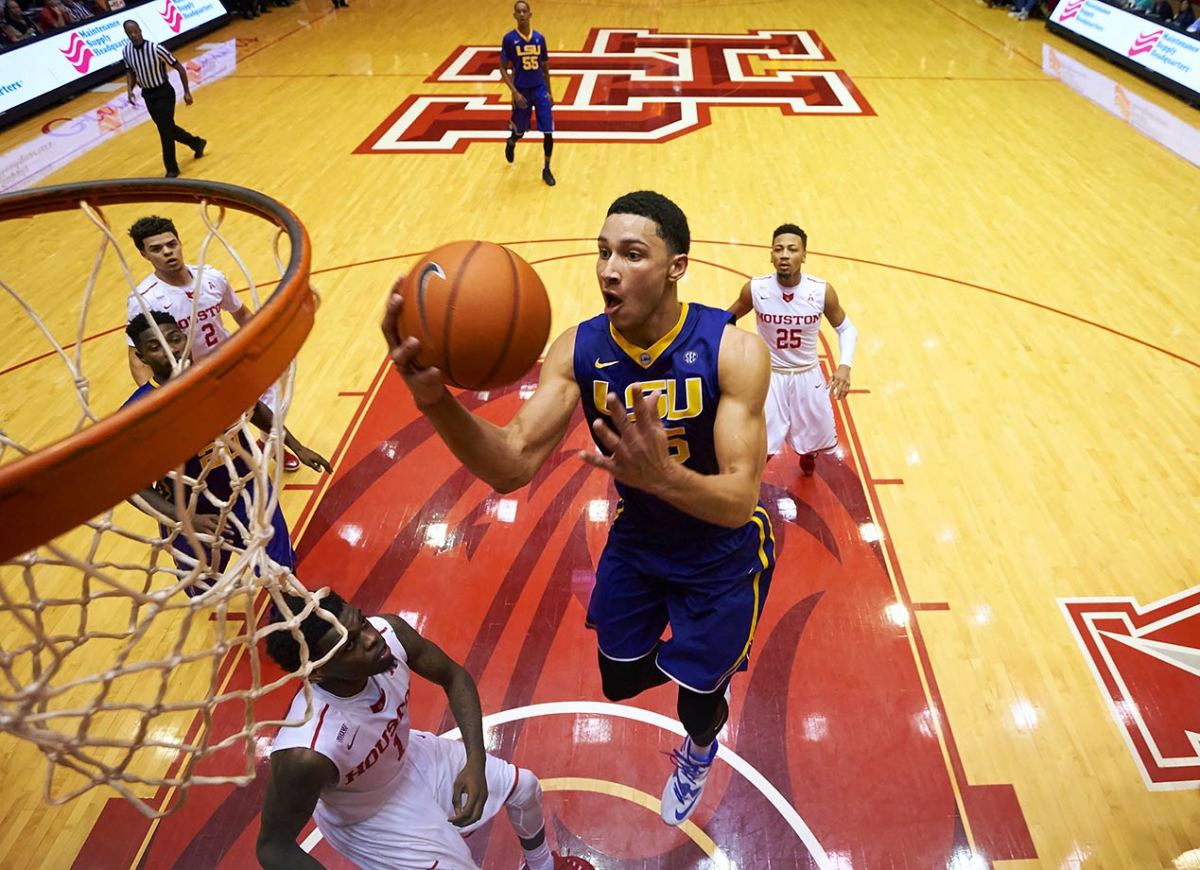
Number one could've been a much closer debate this year, but Simmons has had the clear edge ever since the Sixers won the lottery. Brett Brown knows his family from his days in Australia, Simmons trusts The Process, and this is already done. There are real questions about his work ethic at LSU and how he'll fit in the NBA, but he's got the highest upside on the board. He's 6'10 with point guard skills, and if he can develop a dependable jumpshot and improve on defense, he could be somewhere between LeBron James and Draymond Green—the two best players on the floor of an NBA Finals Game 7 a few days ago. For the Sixers, that kind of upside is worth the risk.
2. Los Angeles Lakers: Brandon Ingram, F, Duke (6'9", 195)
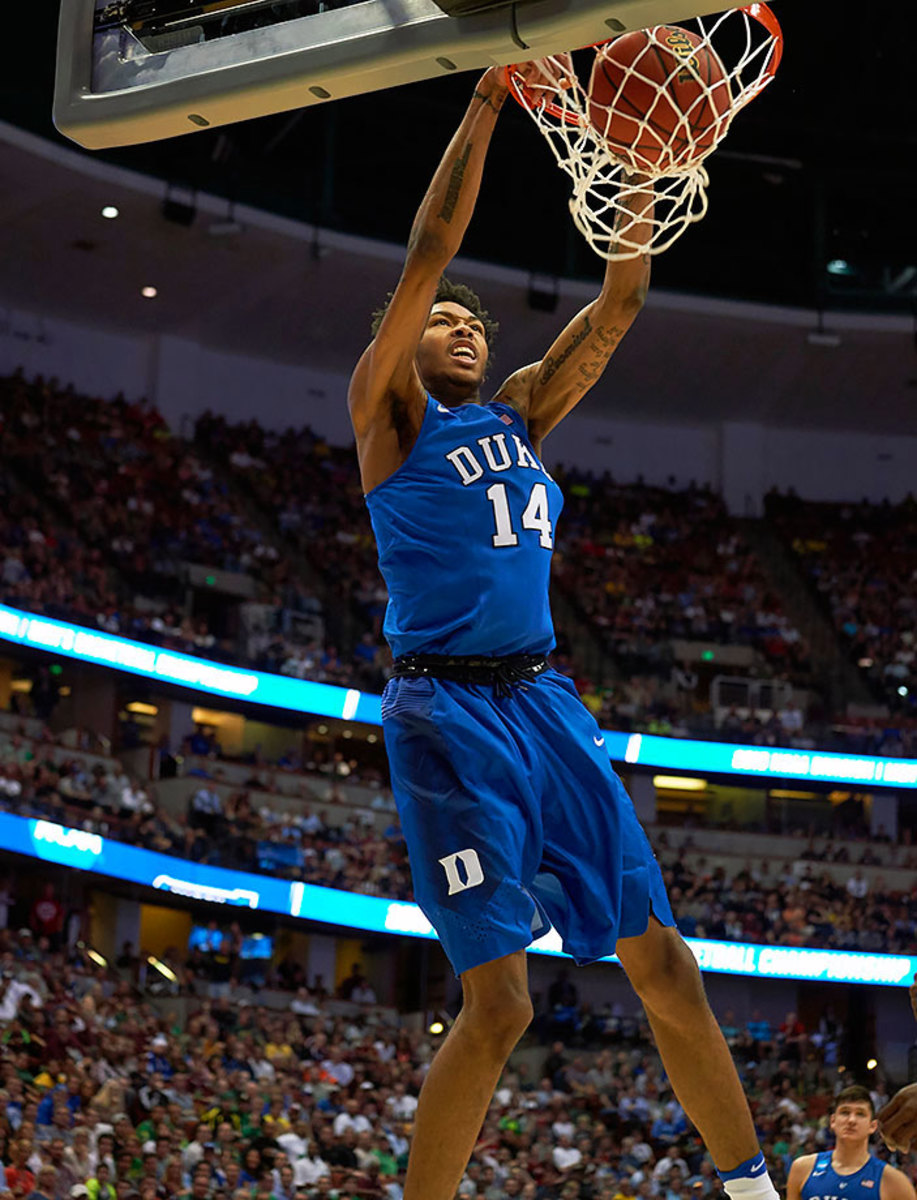
Ingram's my favorite player in the draft. He looks like he weighs 150 pounds, but he plays bigger, and he was fearless for Duke last year. All the typical draft buzzwords apply to his place in the top two—he's got a freakish wingspan (7'3), three-point range, the ability to play multiple positions and tons of upside—but I like Ingram for his intangibles as much as anything. He played his tail off against bigger players all year long, he got better as the season unfolded, and by the end he was clearly the best player on Duke's team at 18 years old. The Lakers are apparently settled on Ingram, and L.A. fans should be thrilled.
3. Boston Celtics: Jaylen Brown, G/F, Cal (6'7", 225)

The hype comes full circle! After half the NBA decided Brown was overrated over the past few months, he's now right back in the mix near the top of this draft, and he could surprise everyone Thursday. Boston has liked Brown since the regular season, and if the Celtics keep this pick, here's to betting that Ainge goes for upside on the wing. This is the same GM who was ready to trade four first–round picks for Justise Winslow last year, and Brown does a lot of the same things. With a reliable jumper, he could turn into a terror on both ends of the floor. Or, to think of this a different way: If the Celtics can't trade for Jimmy Butler, maybe they can draft him.
4. Phoenix Suns: Marquese Chriss, F, Washington (6'9", 225)
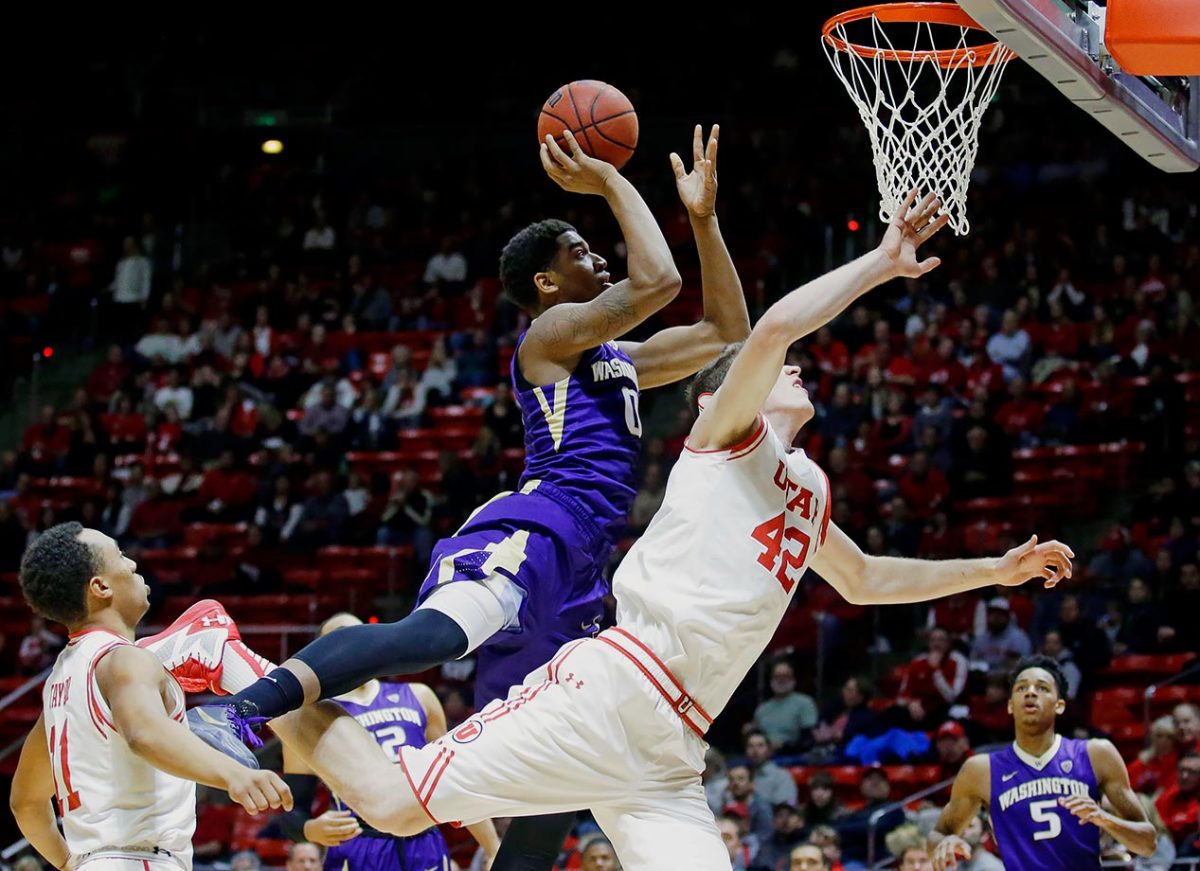
Speaking of hype... Chriss came out of nowhere—he's only played basketball for five years, he wasn't ranked in the top 50 out of high school and he only played about 25 minutes per game for Washington (thanks in large part to foul trouble)—but over the past month he's exploded up draft boards. He's got the highest ceiling of anyone beyond the top two. That's partly an indictment of his lottery peers, yes, and he's also got a much lower floor than someone like Jaylen Brown, sure. But all of that is what makes this fun. Will Marquese Chriss turn into a full-on pick-and-roll nightmare next to Devin Booker, or will he be 2016's Tyrus Thomas? Let's find out!
5. Minnesota Timberwolves: Kris Dunn, G, Providence (6'4", 220)
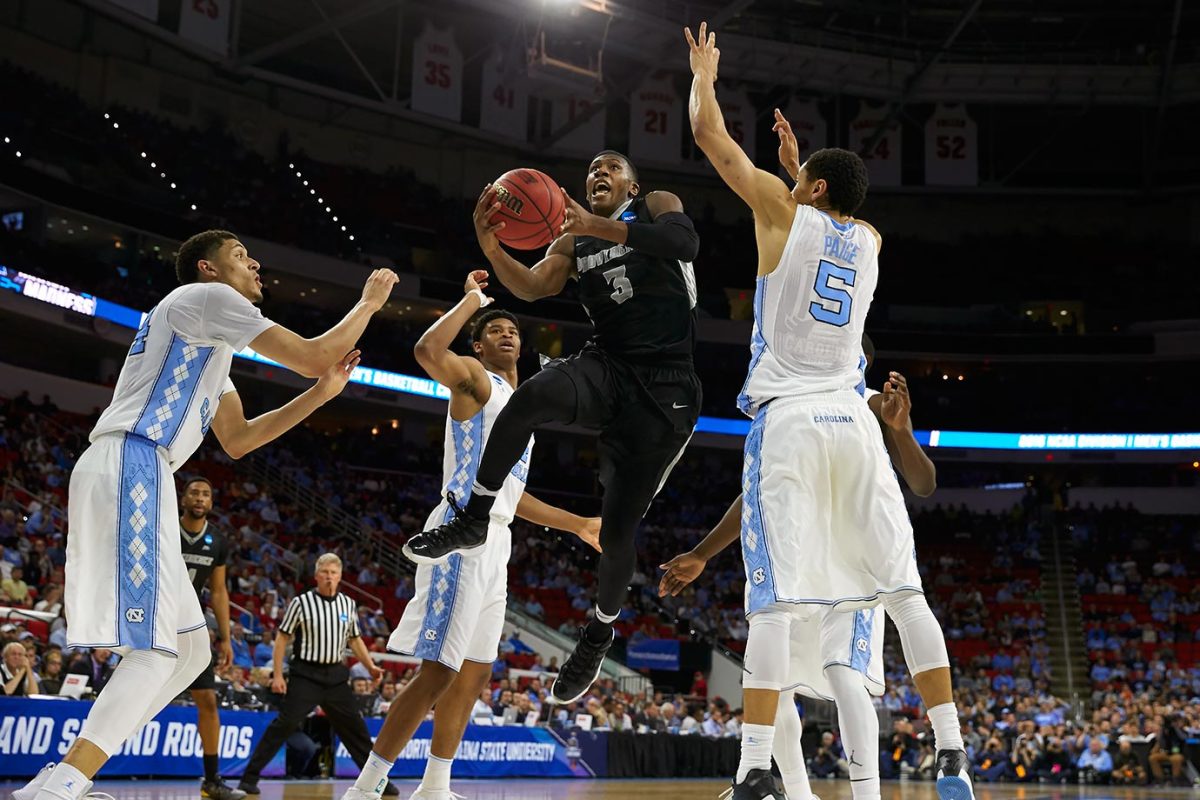
Minnesota could really use Dragan Bender in this spot, and a future built around him and Karl–Anthony Towns would be terrifying. On the other hand, Kris Dunn may be the safest bet in the draft outside of Brandon Ingram, and between injuries and Ricky Rubio rumors, the Wolves point guard situation isn't quite as solid as you might think. Dunn was one of the most productive players in the country at Providence, and he's the closest of any lottery pick to helping a team from Day One next year. He's built like a tank and plays like it—there's no way Thibs will be able pass on that, right?
6. New Orleans Pelicans: Jamal Murray, G, Kentucky (6'4", 205)
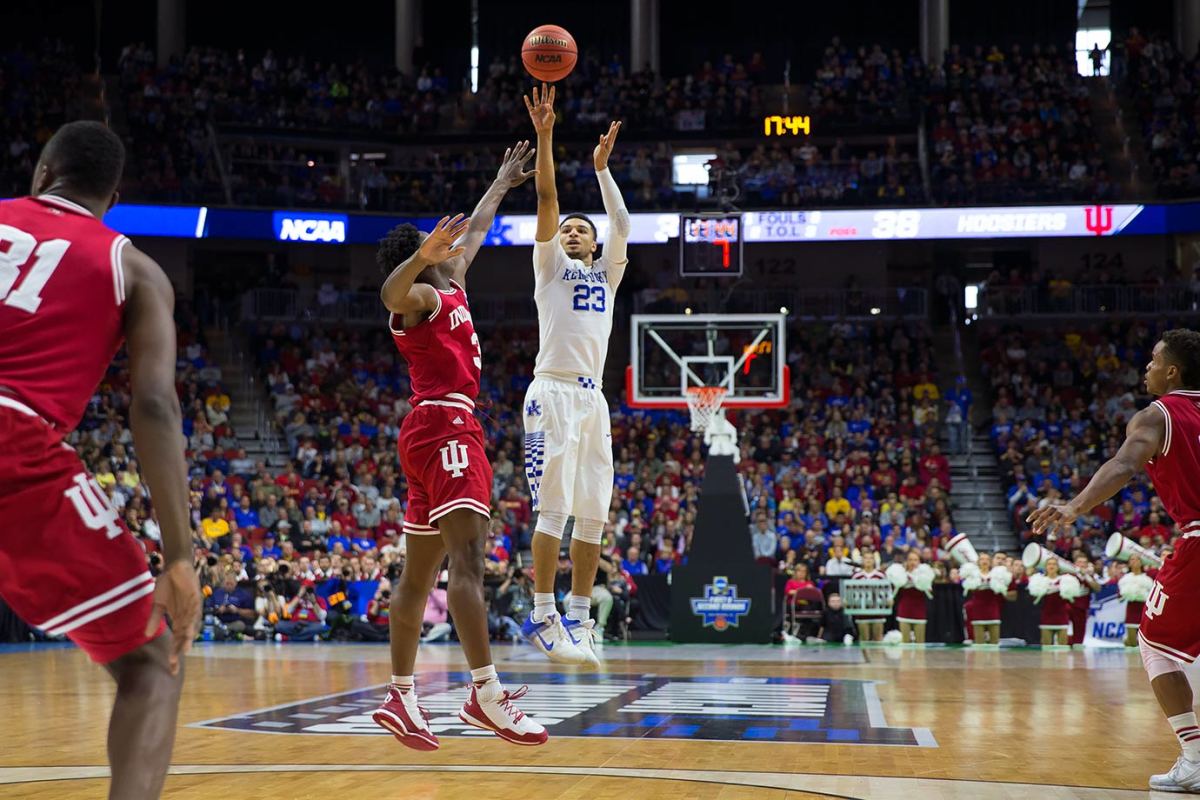
Anyone who watched him in the NCAA tournament against Indiana saw him struggle against NBA length and quickness, and his lack of athleticism will make playing defense a struggle. But look at some of the best combo-guards in the NBA—Curry, Harden, McCollum, even Devin Booker and D'Angelo Russell last year—and there are plenty of examples of talented guards who faced a lot of the same skepticism at draft time. The Pelicans should grab him hoping that he can get to that C.J. McCollum level next in a few years, and knowing that his three-point shooting could help them regardless next season.
7. Denver Nuggets: Dragan Bender, F, Croatia (7'0", 220)
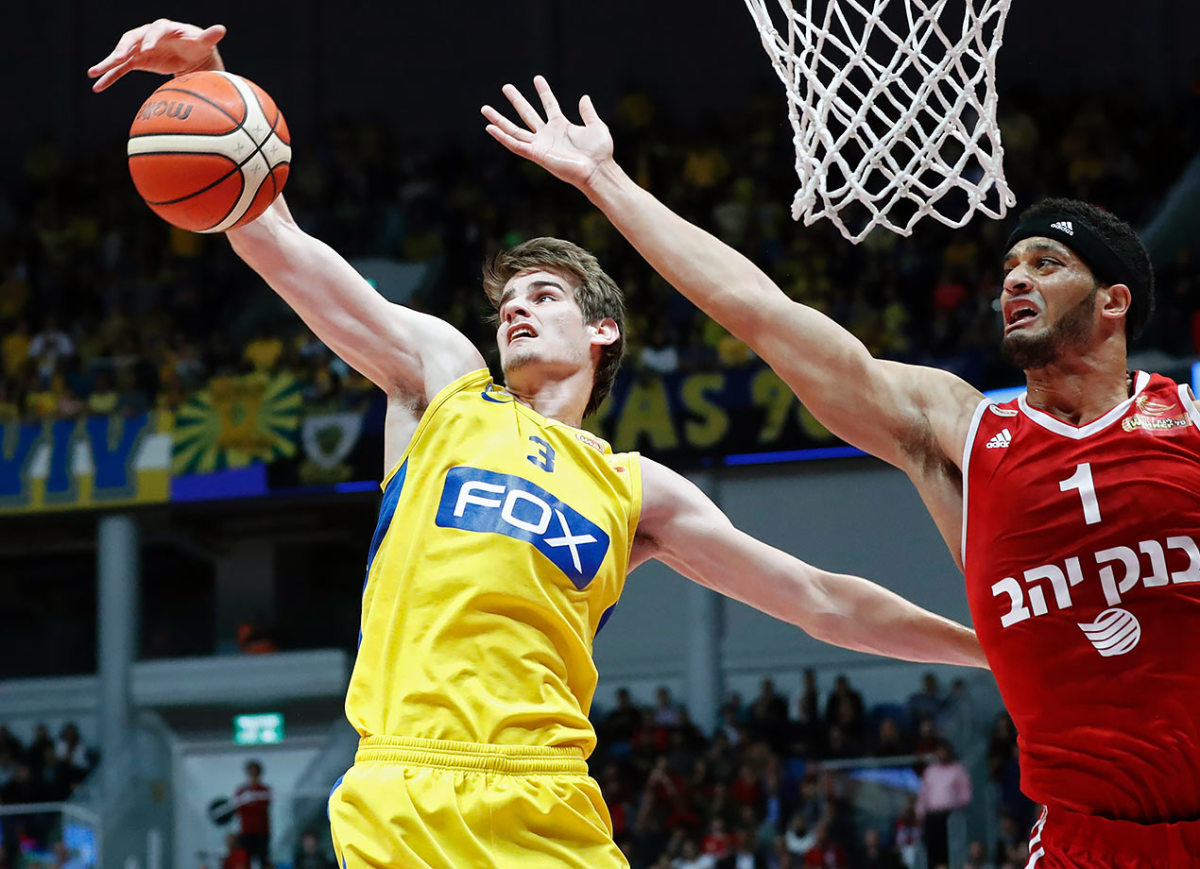
Bender's size and ability to space the floor will make him valuable wherever he lands, but as the youngest player in the draft, it'll take him a few years before he's ready to contribute. Even then, he may not score enough to be a true superstar. All of this is why he could slide tonight. But he could also turn into a skilled glue guy who can pass, shoot, and guard multiple positions on defense. For a Nuggets team that already has Nikola Jokic and Jusuf Nurkic at the five, adding Bender as a stretch–four would be a major win for the long-term blueprint.
8. Sacramento Kings: Buddy Hield, G, Oklahoma (6'4", 215)
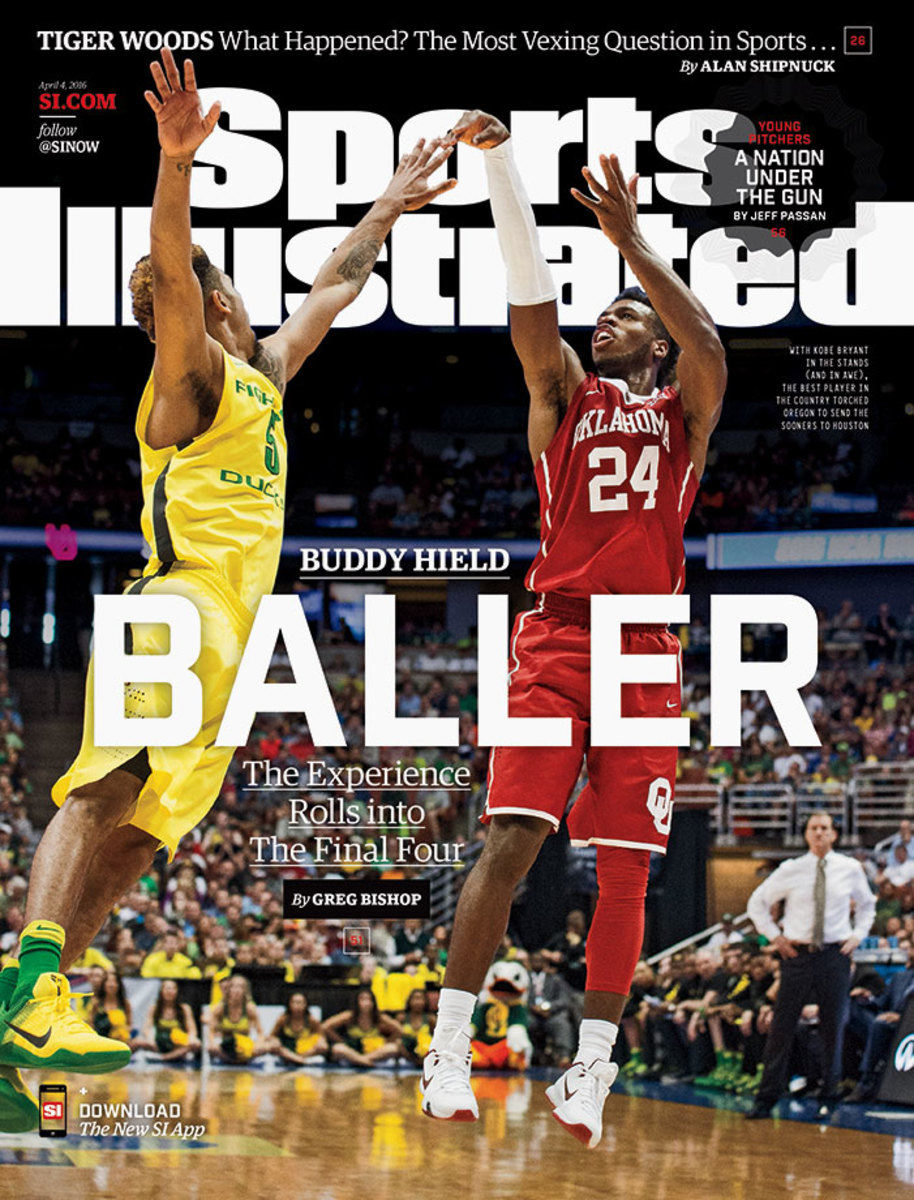
According to ESPN's Chad Ford, the Kings have been shunned by almost every prospect in the first round. Players have refused to work out, and many have refused to even provide medical records. Apparently nobody wants to be the next Nik Stauskas? In any case, Sacramento is opening a new arena this season, Boogie is in the final two years of his contract and still hasn't made the playoffs, and the Ben McLemore Experiment has been on life support for a good 24 months now. Hield's best case scenario is the Bahamian J.J. Redick, which would be great in this draft. Even in the worst–case scenario—Jodie Meeks?—his shooting should help off the bench.
9. Toronto Raptors: Jakob Poeltl, C, Utah (7'1", 240)
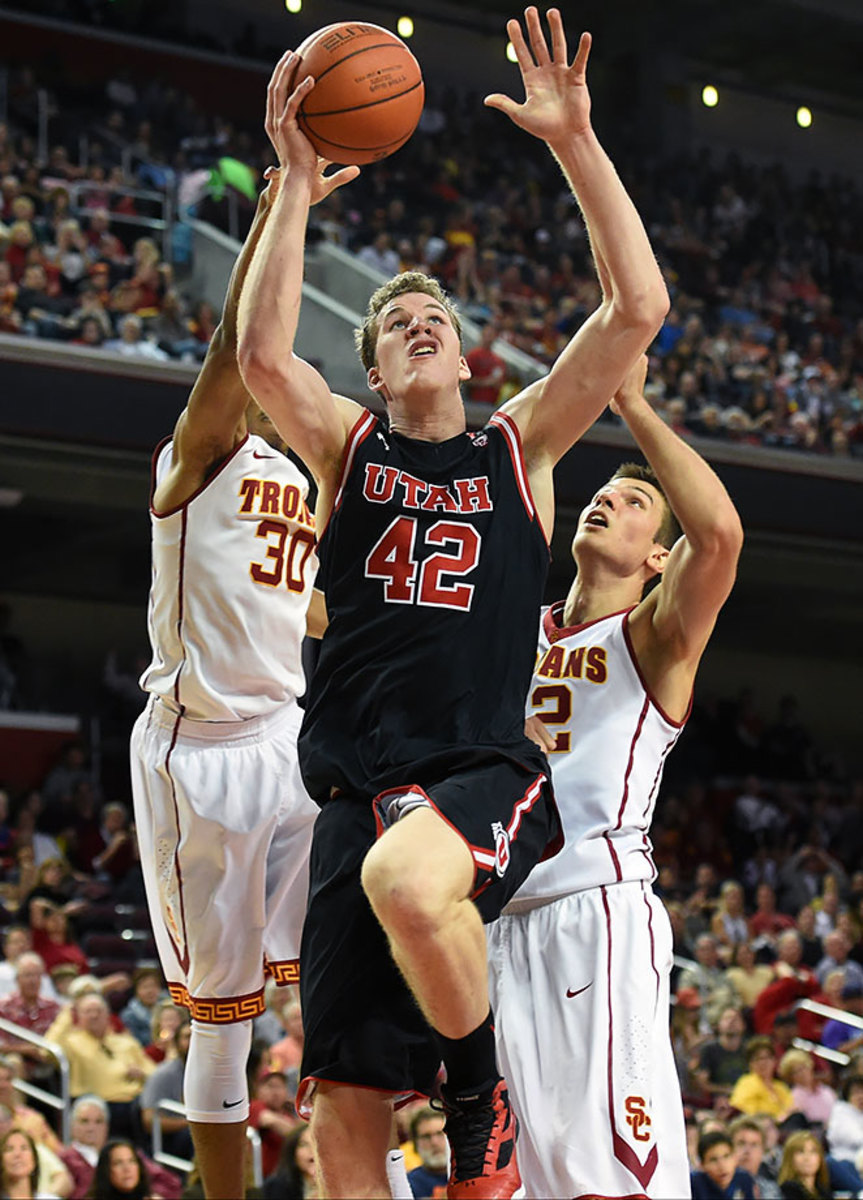
Poeltl has been a favorite of mine for a while—possibly because it's so much fun to pronounce his first name (YA-KUB). After two years in the draft the spotlight has hurt some his of buzz, but he should be a pleasant surprise for whichever team lands him. His size alone will make him a factor against most modern big men, and he's skilled around the rim. He's smart and he's mobile, and if his shot blocking isn't elite, his team defense should be excellent. If the Raptors think they'll lose Bismack Biyombo, Poeltl's a good replacement, and probably the best player available here.
10. Milwaukee Bucks: Deyonta Davis, F/C, Michigan State (6'10", 240)
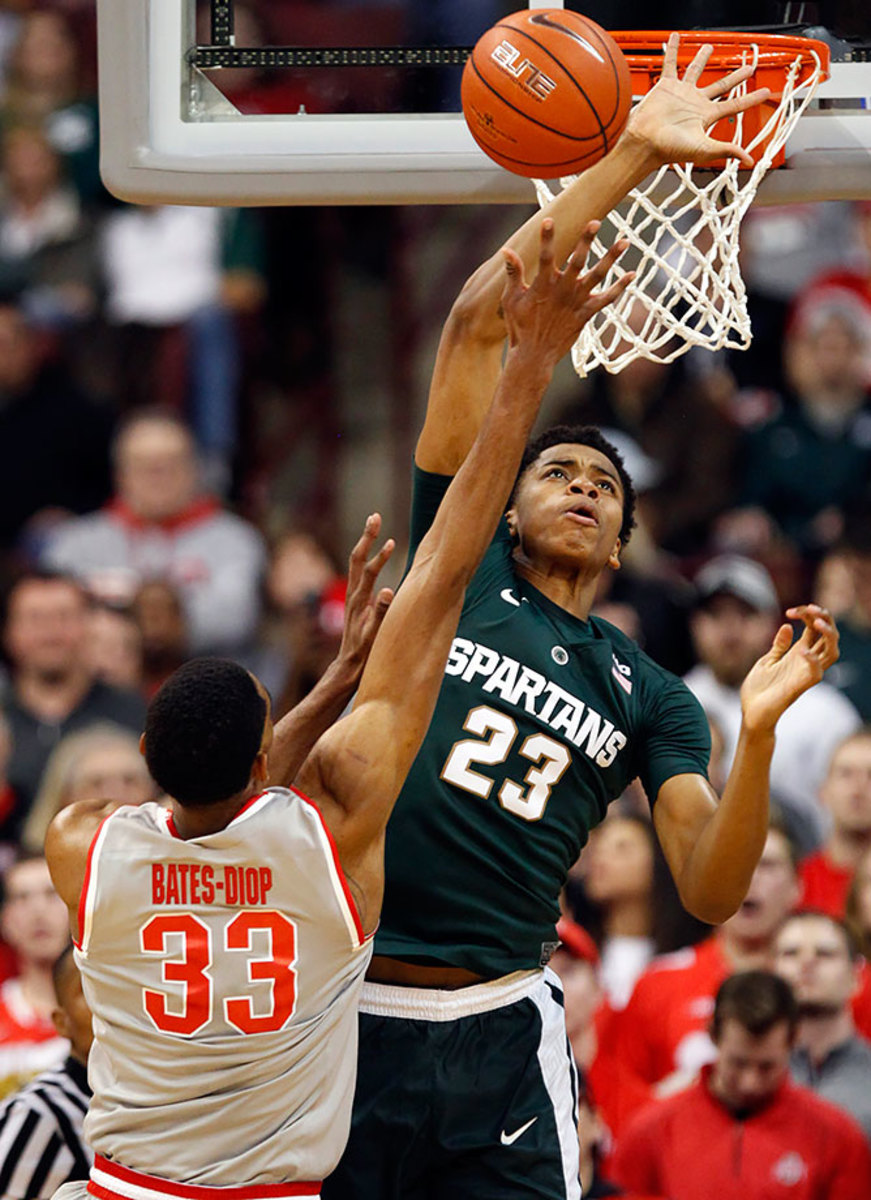
The Bucks could go in a couple different directions—Wade Baldwin, Timothe Luwawu, and Henry Ellenson are all options—but after talking it through on this Bucks podcast with friends at Brew Hoop, I'm pretty sure drafting Davis is the best option. He's raw and probably a few years away from helping as a starter, but this would be a smart long-term play. He can protect the rim, rebound, and best–case scenario, he can knock down jumpers and spread the floor. Davis can definitely do the first two, and maybe even the third. Do it, Bucks Mafia.
11. Orlando Magic: Skal Labissiere, F/C, Kentucky (6'11", 220)
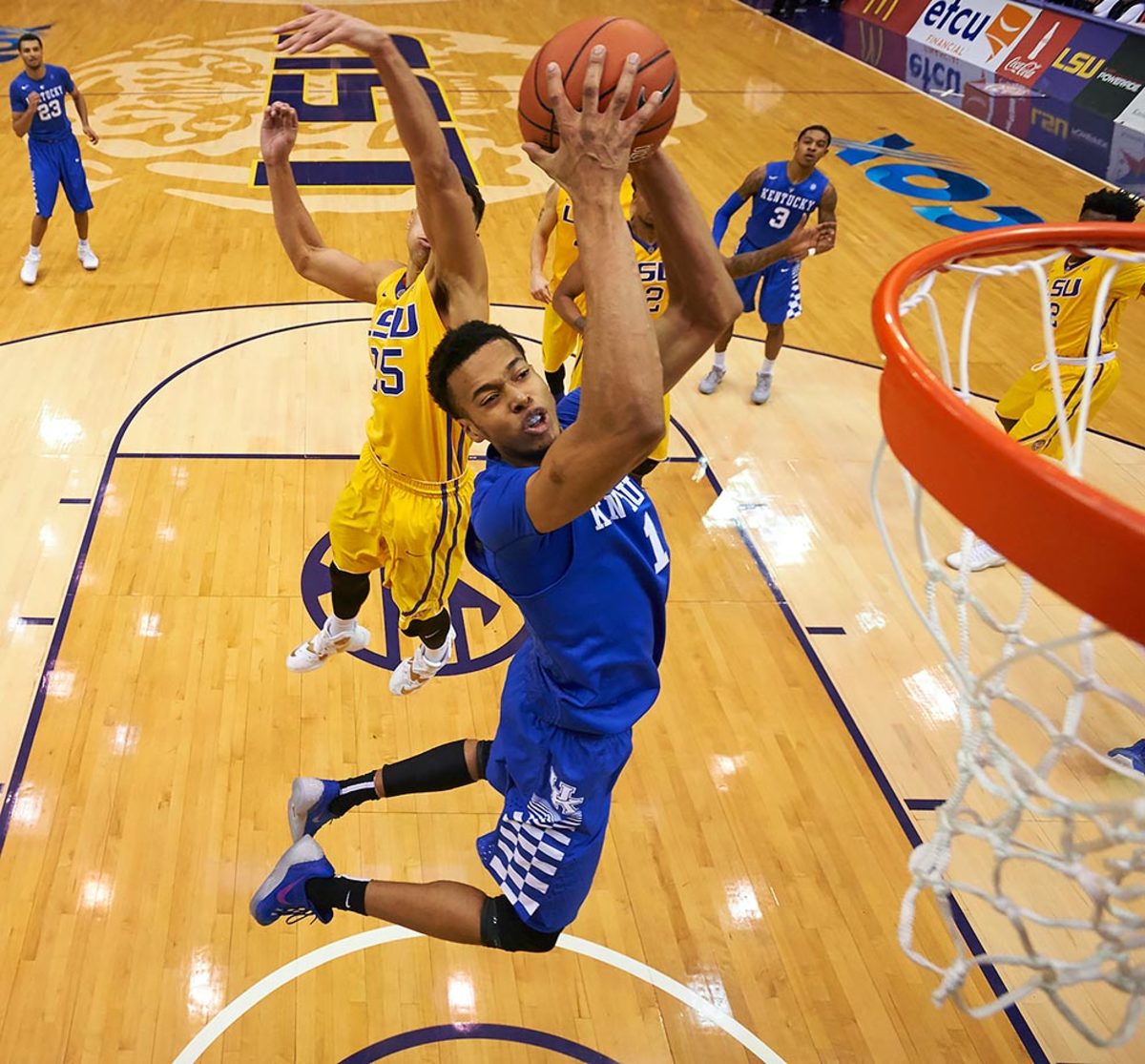
General question: Does anyone know what the Magic are doing? The pieces in Orlando don't necessarily fit, but they've got so many young players from the past few years that there aren't any obvious holes to fill, either. For now, let's assume they go for upside here. Skal is a few years and a few thousand Chipotle burritos away from banging with NBA big men, but if he can put on enough weight to hold his own, he's got all the tools to be an excellent rim-protecting stretch five (think Channing Frye).
12. Atlanta Hawks: Domantas Sabonis, F, Gonzaga (6'10", 240)
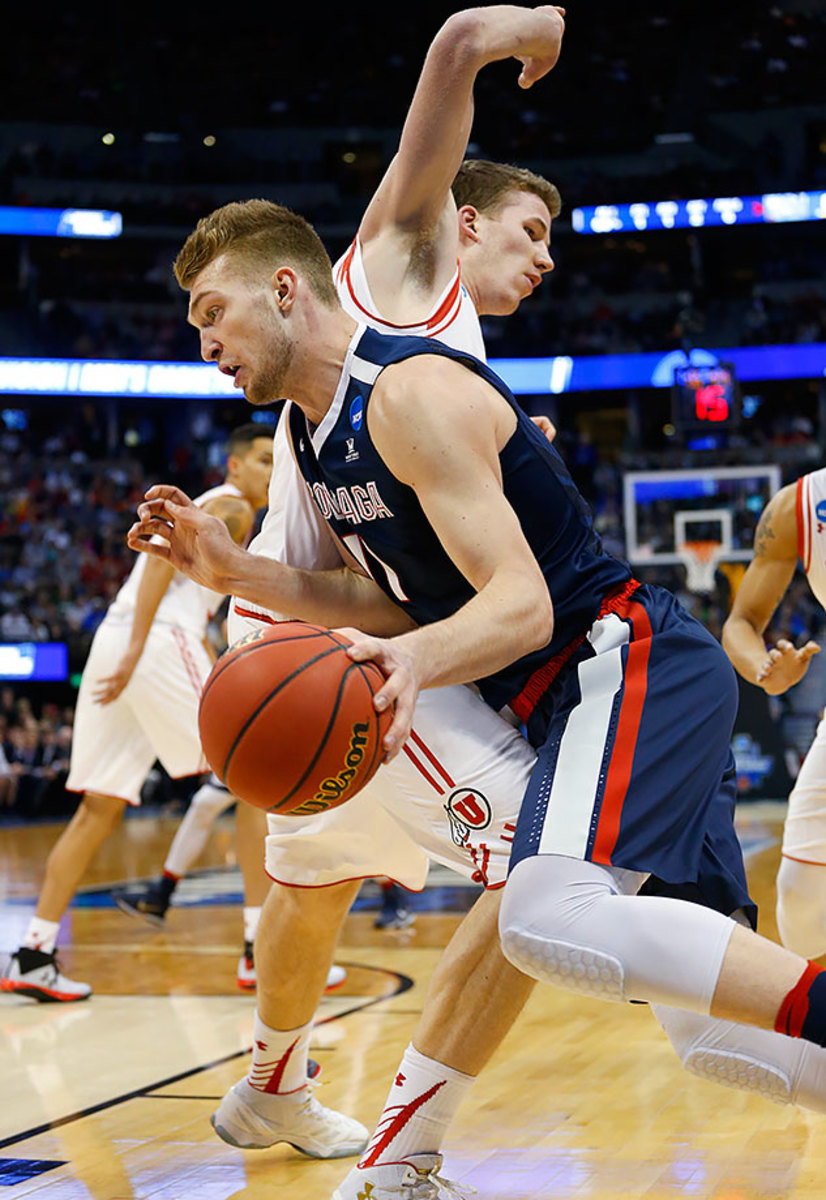
Let's see... Undersized, underrated, high motor, high IQ, star of everyone's favorite Cinderella team... He's basically already a Hawk, right? And this is definitely the best–case scenario for Domantas Sabonis. He's good and productive now, but if the Hawks can help him add a perimeter jumper, he could be excellent for the next 10 years.
13. Phoenix Suns: Timothe Luwawu, G/F, France (6'7", 205)
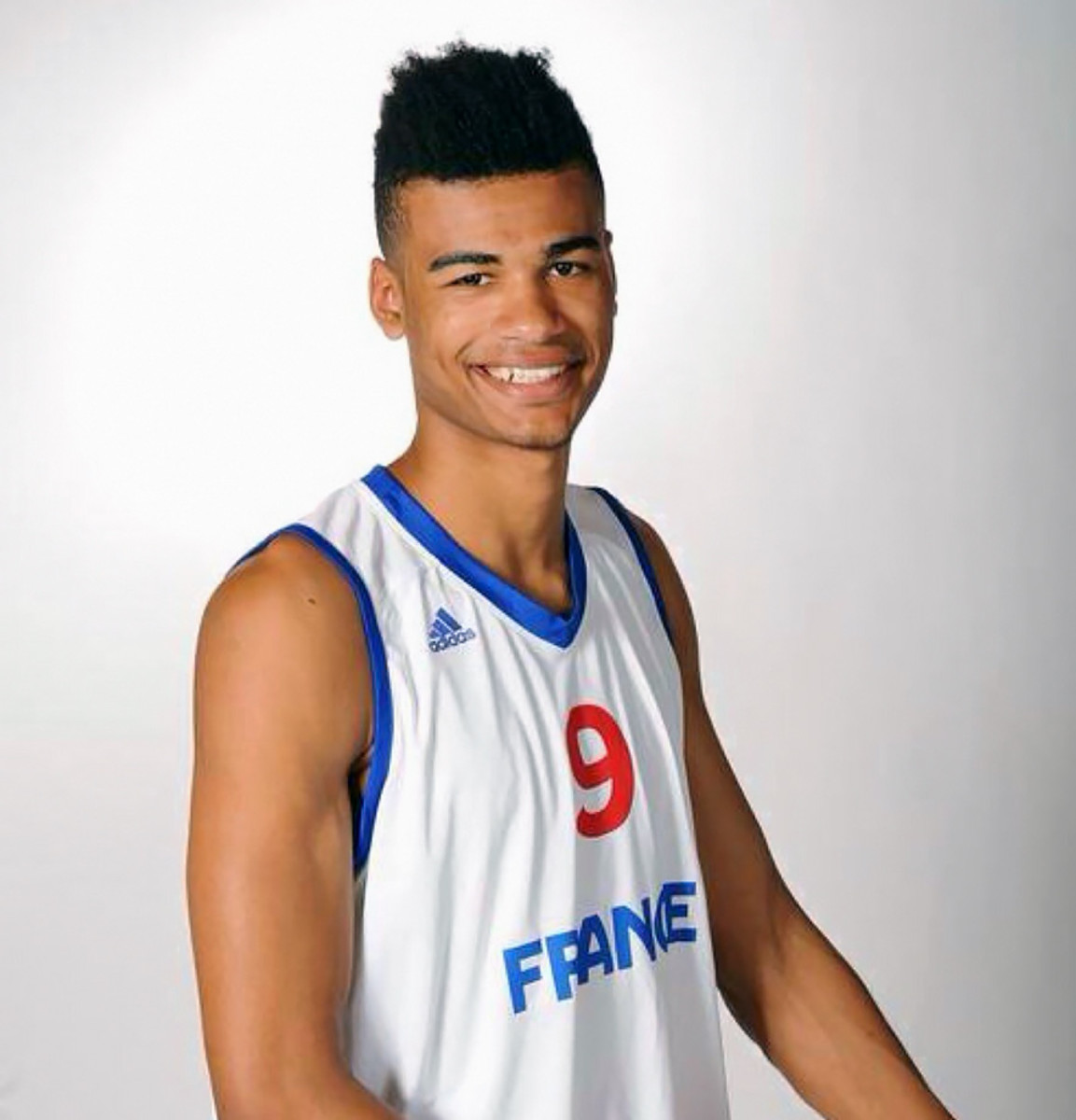
Luwawu's highlights a) lead this draft class in dunks-per-minute and b) make me want a Mega Leks jersey. At worst, he can be a helpful energy role player off the bench. At best, he can hone his three-point shooting and grow into a long (6'11 wingspan), athletic monster on the wing playing next to Devin Booker in Phoenix. The Suns could also take Henry Ellenson here, but I hope they roll the dice on Luwawu.
14. Chicago Bulls: Wade Baldwin IV, G, Vanderbilt (6'3", 195)
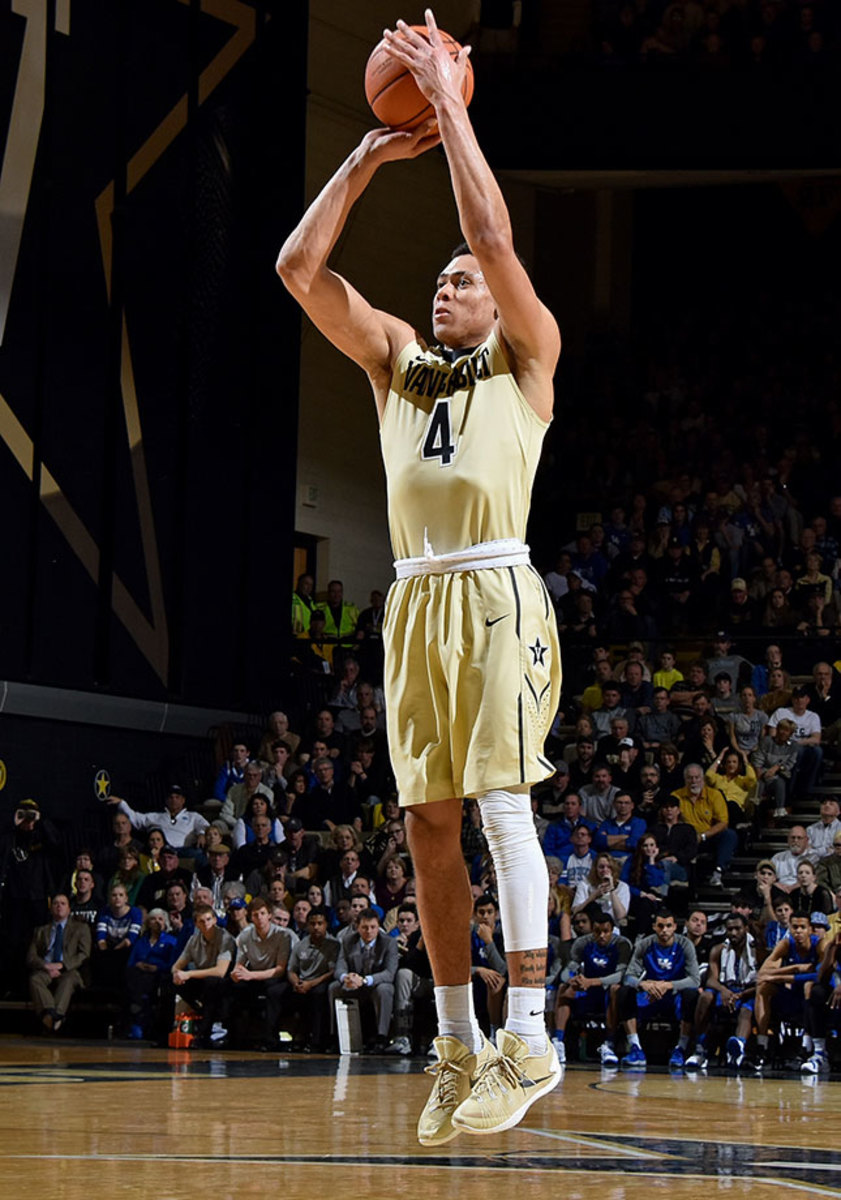
This draft pick doesn't even matter. Bulls fans are all still shell-shocked after the Derrick Rose era suddenly turned into the Jose Calderon and Robin Lopez era, and it's hard to blame them. Having said that, Wade Baldwin's defense and three-point shooting make him a perfect fit for everything the NBA values now. If Jimmy Butler's going to be handling the ball more, it makes sense to add a point guard who can defend and spot up for three while Butler creates.
15. Denver Nuggets: Furkan Korkmaz, G, Turkey (6'5", 175)
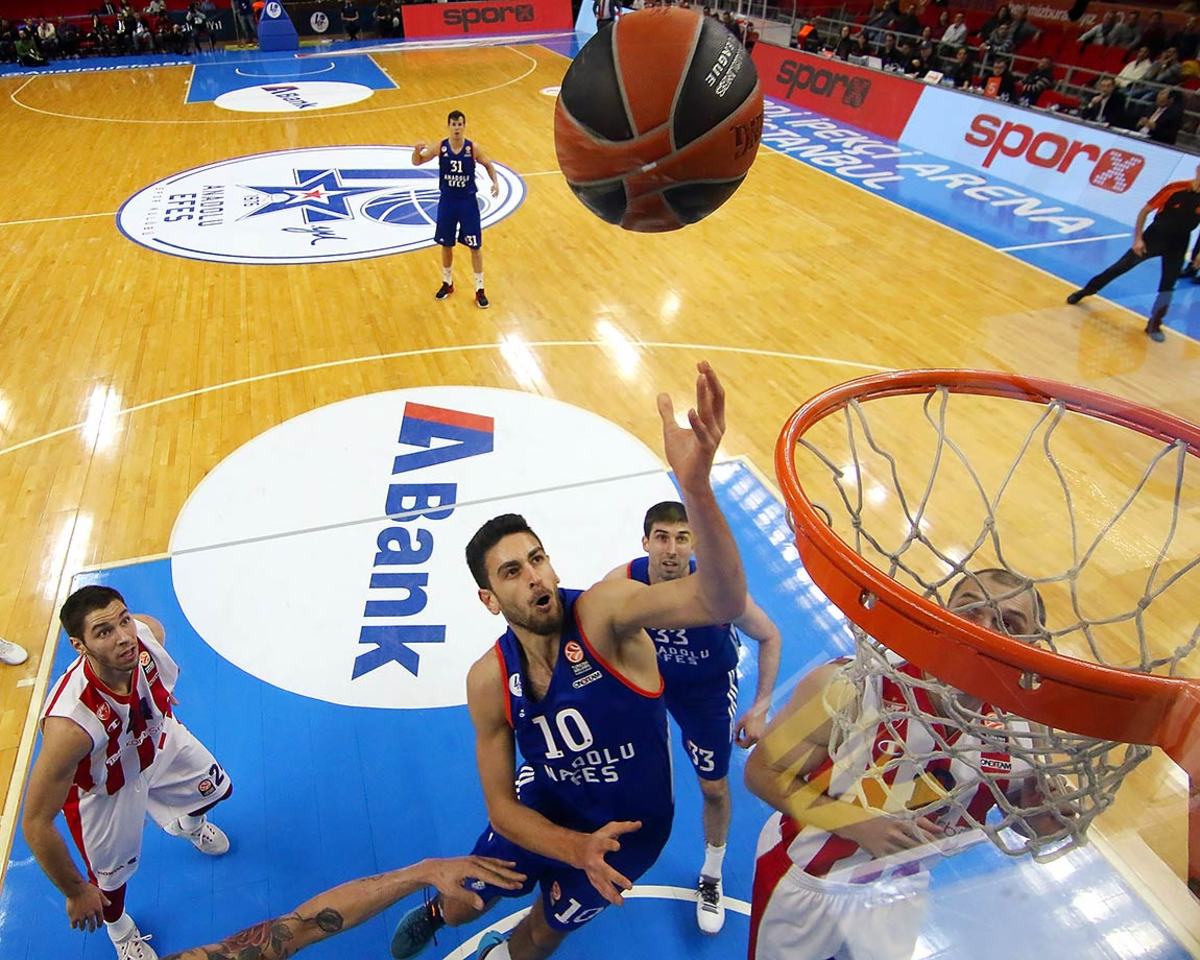
I lied when I said Brandon Ingram was my favorite player in the draft. Furkan Korkmaz is my favorite player in the draft. Wherever he lands tonight, I hope ESPN shows his full, six-minute dunk contest—dunking over that couple's romantic dinner, and then putting on the Darth Vader outfit for the finale—and gives the people what they need. He's also only 18 years old, and probably the best draft-and-stash prospect in this draft. Assuming the Nuggets won't add three rookies this season, Furkan at 15 is a smart play.
16. Boston Celtics: Taurean Prince, F, Baylor (6'7", 220)
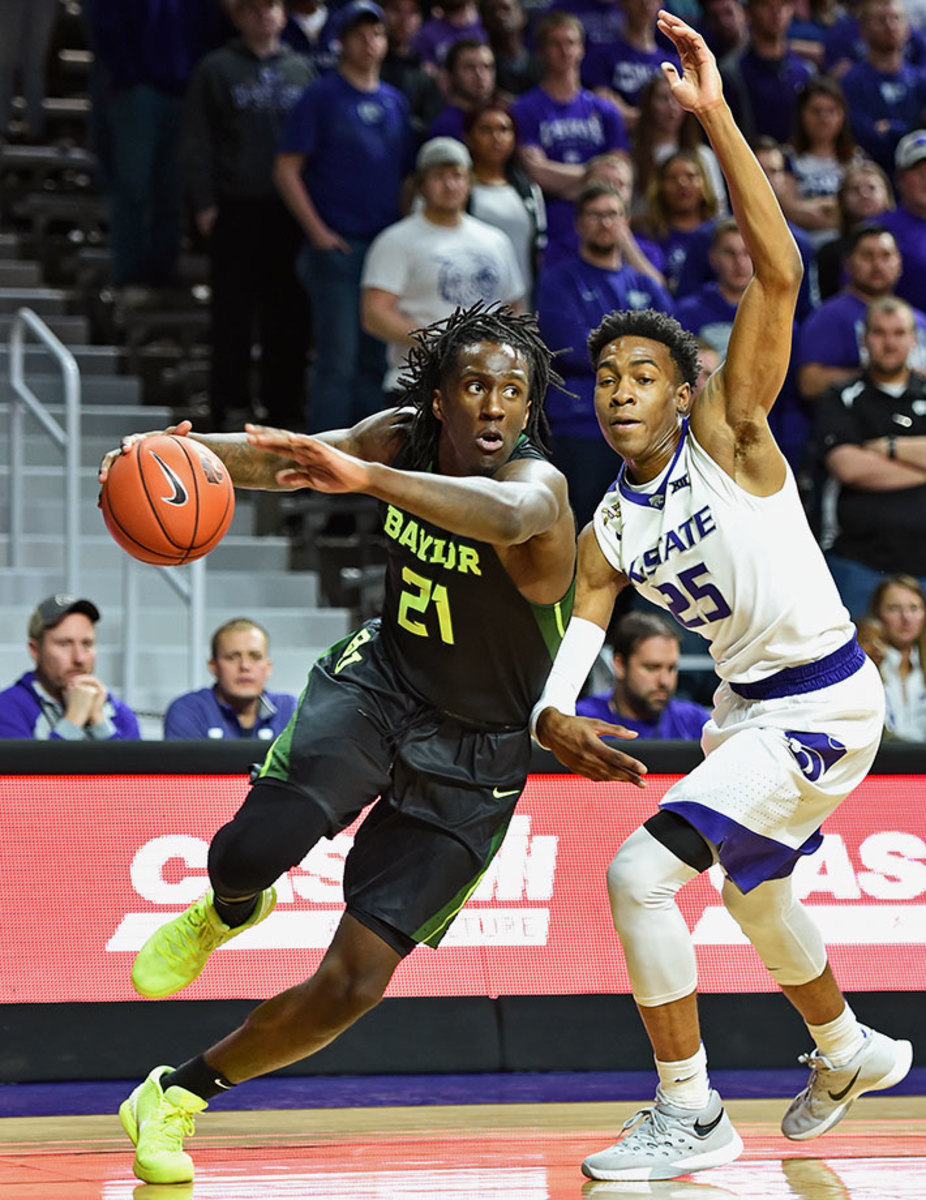
Jae Crowder gets an understudy! Prince can play either forward spot, he's built like a linebacker, he dunks like a linebacker, and his three-point shooting is solid. The Celtics don't have many glaring needs (beyond star power that this draft won't provide), and as a role player who will win over Boston fans within his first month, Prince could be great.
17. Memphis Grizzlies: Malachi Richardson, G, Syracuse (6'6", 195)
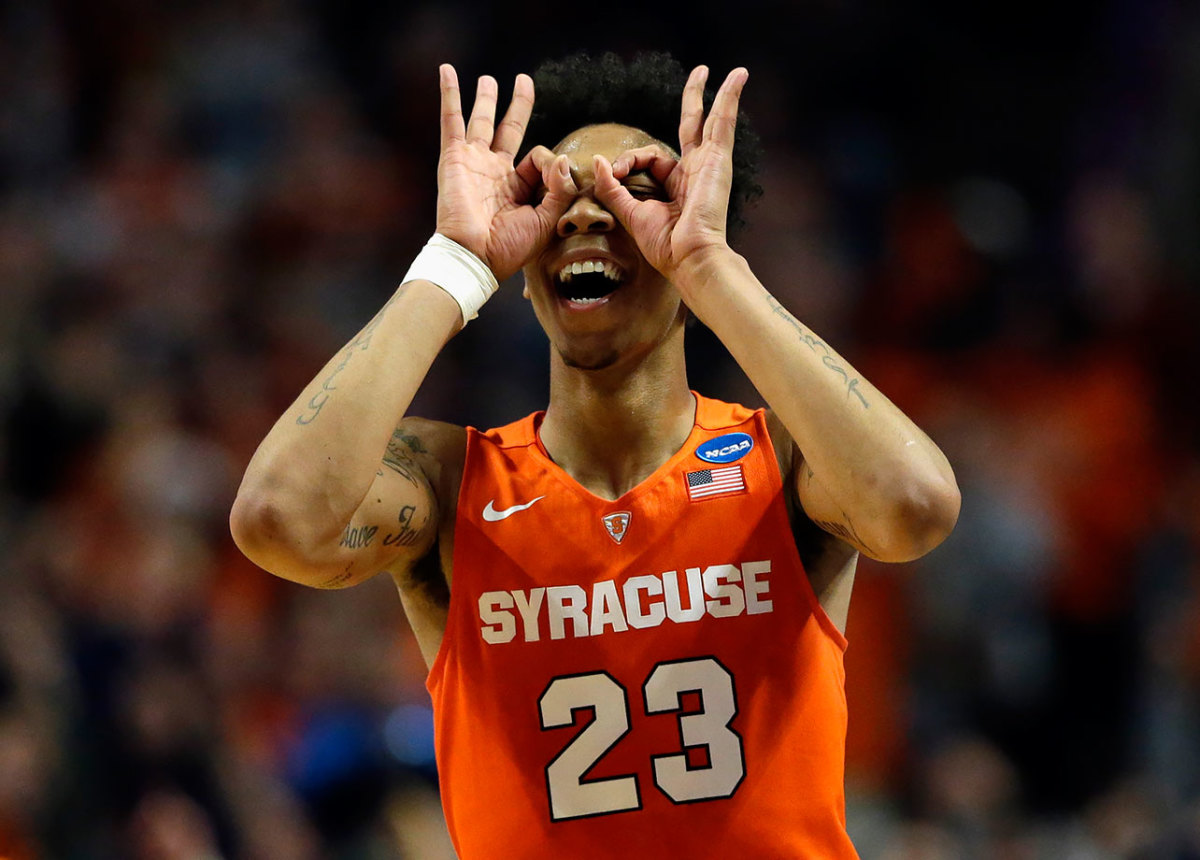
There was talk over the weekend that Memphis encouraged Richardson to shut down his workouts, because if he slides to 17, the Grizzlies plan to take him. That's a little bit puzzling considering some of the struggles he had during the regular season at Syracuse, but he's a good shooter with tools that could turn him into a starter down the road.
18. Detroit Pistons: Henry Ellenson, F/C, Marquette (6'10", 245)
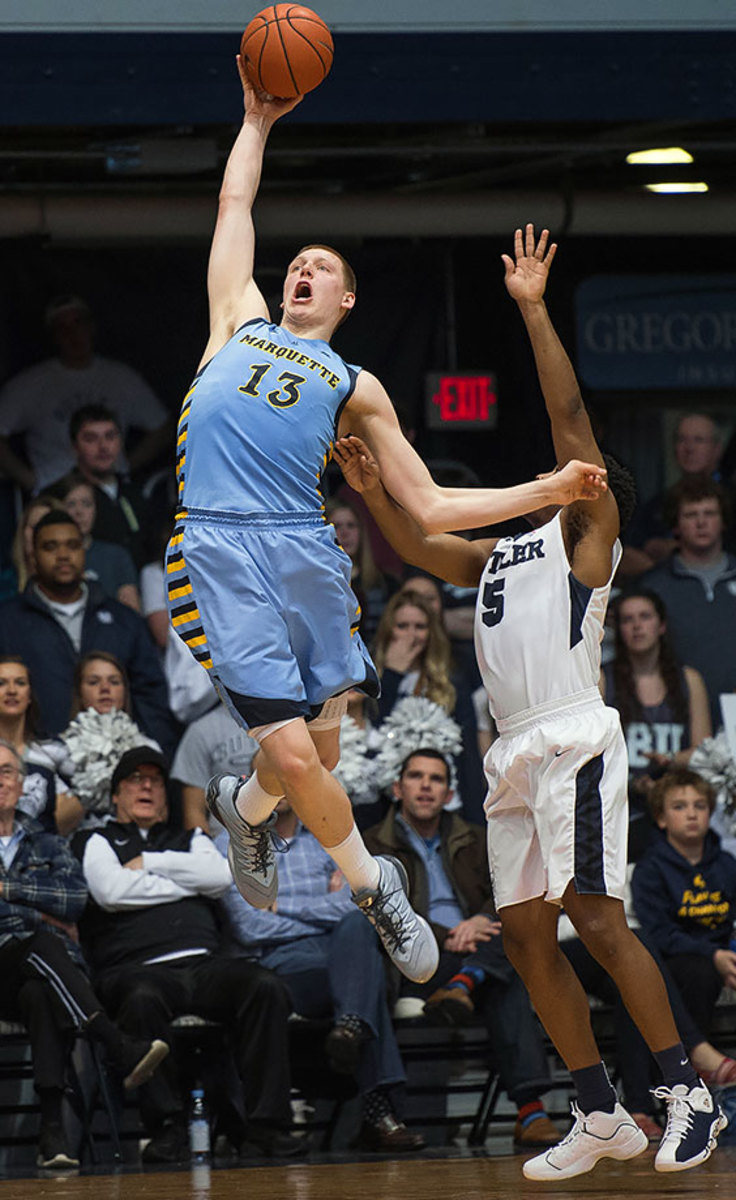
Ellenson may not fall this far on draft night—Toronto, Milwaukee, Denver, and Phoenix will all be tempted—but if he does, it's hard to imagine he slips past Detroit. He's a perfect stretch–four for Stan Van Gundy, with the potential to play next to Andre Drummond or come off the bench as a stretch–five while Drummond sits. His defense will be a work in progress, but this low in the draft, his size and skill would be a steal.
19. Denver Nuggets: Malik Beasley, G, Florida State (6'5", 190)
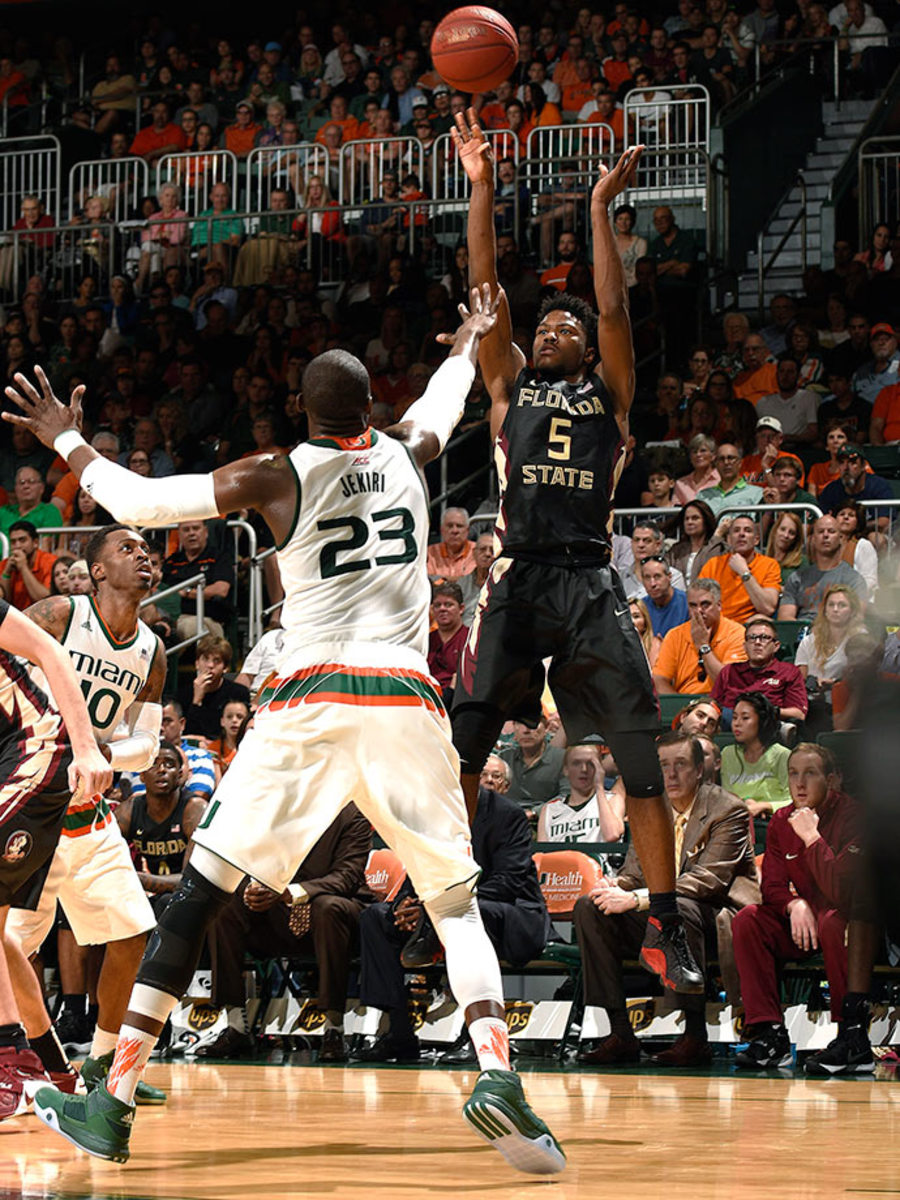
This could be a chance to steal a long-term sidekick for Emannuel Mudiay. Beasley's a little bit like Marquese Chriss. He wasn't on anyone's draft radar coming out of high school, and even now, he's something of a mystery. He can shoot, he's explosive, and while a little undersized, he's got all the tools to grow into a solid defender. Most importantly, my favorite fact of the draft is that both his parents are actors, and his dad is currently working on Bloodline, trying to get paid by Kevin, unaware that Kevin did a bad thing—I'm so in on Malik Beasley.
20. Indiana Pacers: Denzel Valentine, G/F, Michigan State (6'6", 220)
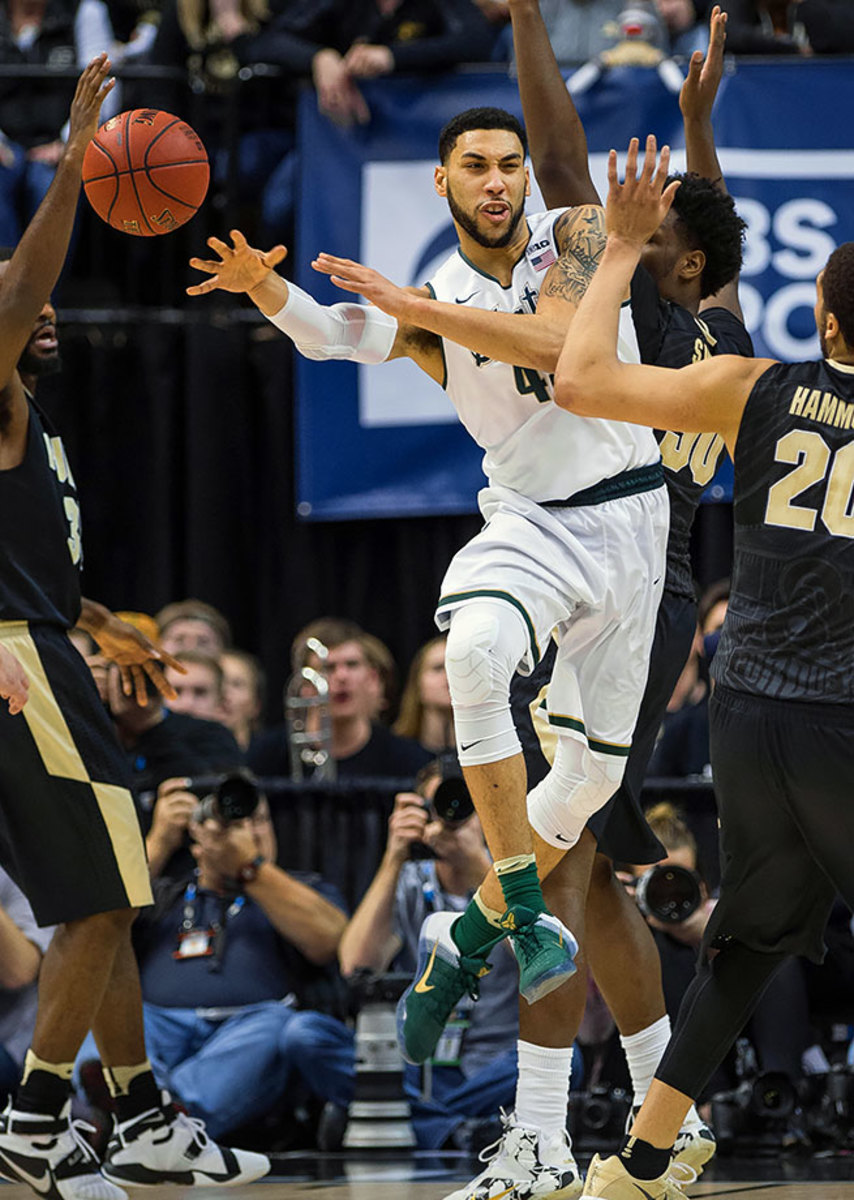
Valentine would probably be closer to a lottery pick if teams weren't scared off by injury concerns over a possibly degenerative knee. Still, his shooting and skill on offense can help anyone, he's one of the smartest players in the draft, and as a four-year senior, he'll be ready to help right away. All of it sounds like a player Larry Bird would fall in love with. Plus, the Pacers bet on Myles Turner's health last year and that worked out pretty well.
21. Atlanta Hawks: Dejounte Murray, G, Washington (6'5", 170)
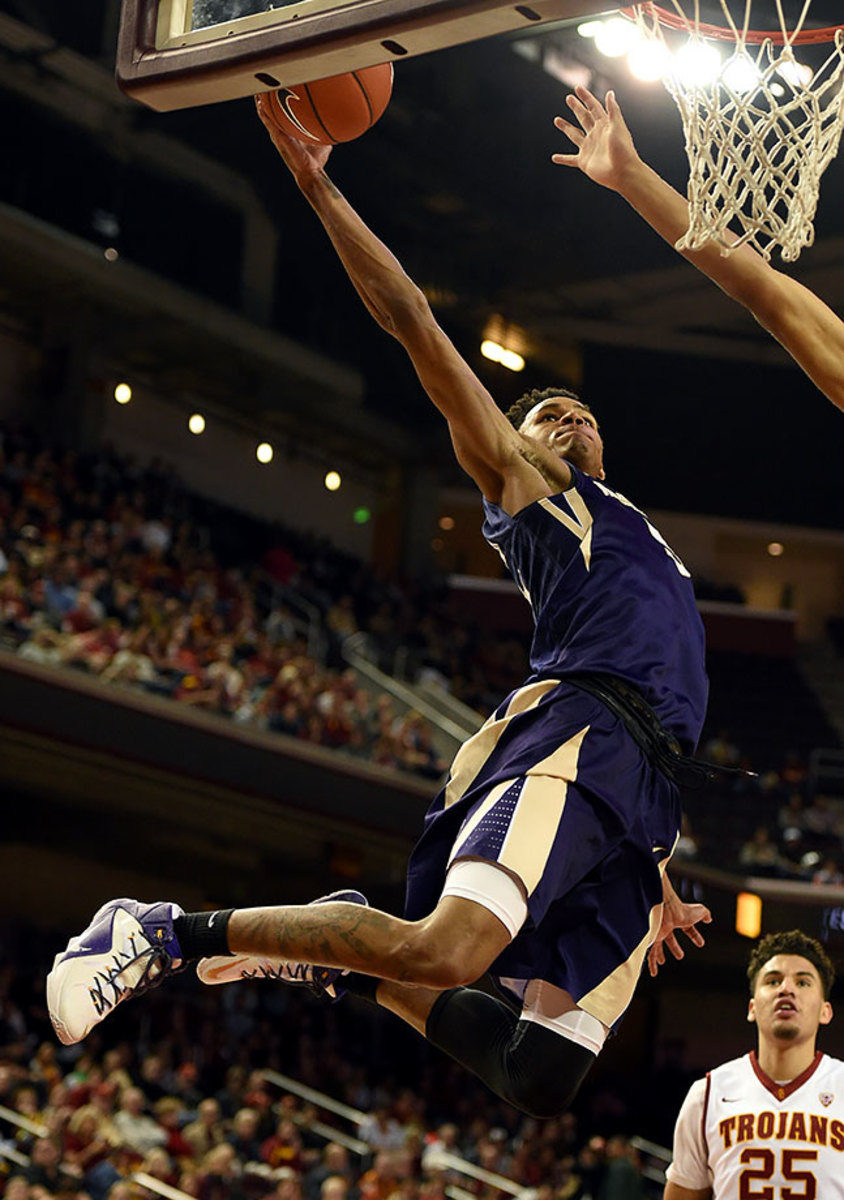
Now that Schroeder is the new Teague, maybe Atlanta needs a new Schroeder? Murray is giving off strong Tony Wroten vibes—great physical tools, can get to the rim at will, can't shoot, probably should've stayed in school—and maybe that scares some teams. It should scare some teams. But the Hawks' staff has been consistently excellent at developing young players, and Murray has more to work with than almost anyone.
22. Charlotte Hornets: Juan Hernangomez, F, Spain (6'9", 225)
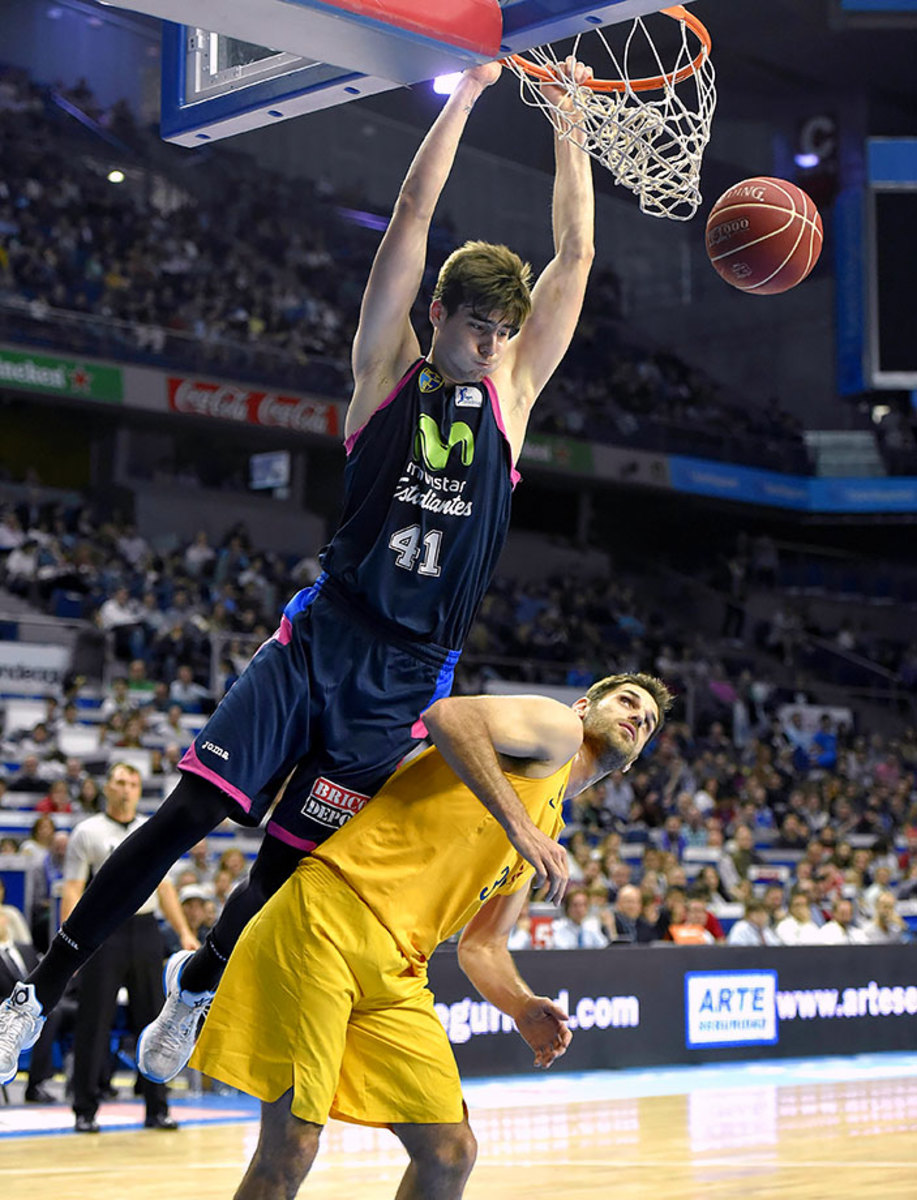
Juan "Juancho" Hernangomez is skilled and he could see time at either forward position in the NBA. His athleticism will be a question mark, but he plays incredibly hard to help compensate. Meanwhile, the Hornets may lose one or both of Nic Batum or Marvin Williams this summer. Grabbing Hernangomez could be a good insurance policy for the future.
23. Boston Celtics: Ante Zizic, C, Croatia (6'11", 240)
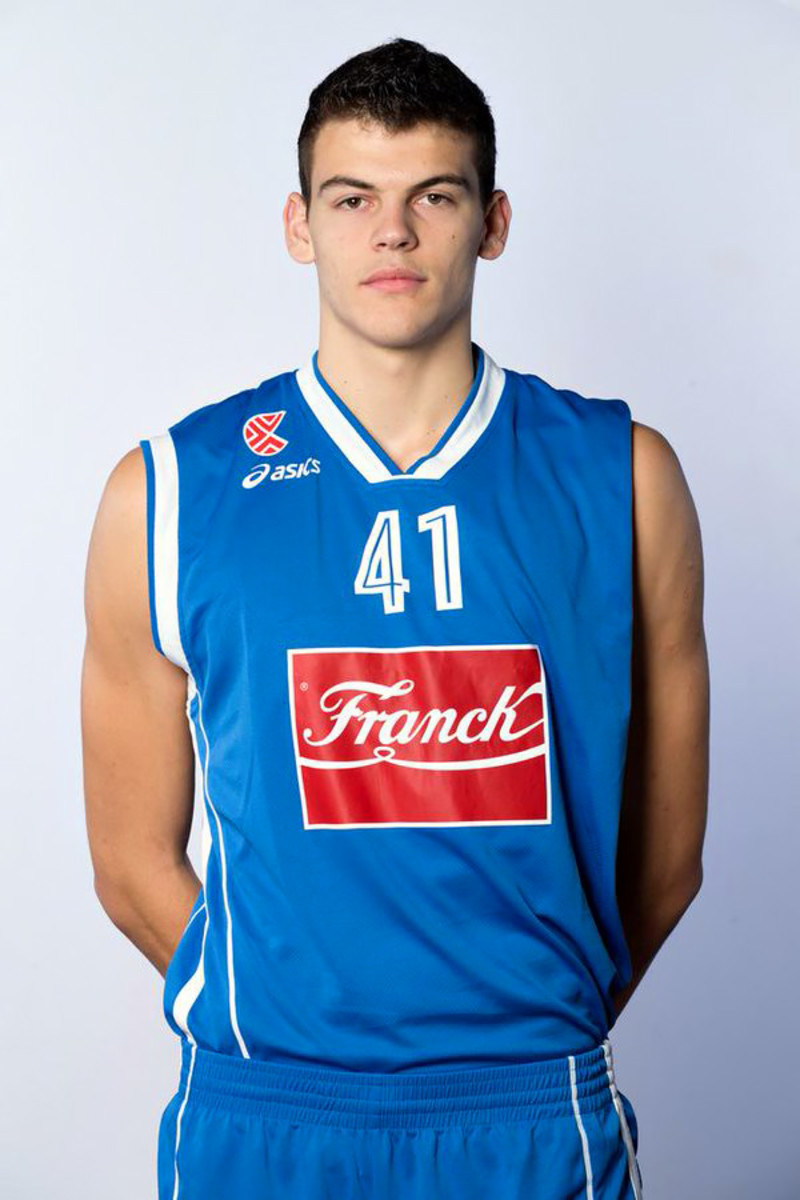
If the Celtics can't swing a trade, they'll likely look to draft–and–stash at least one of these picks. They could go with Zizic here, or Ivica Zubac, another 7–footer from the Adriatic League. Zizic is the more active and athletic of the two and figures to fit better with the direction of the league, but the Zizic-Zubac debate will (hopefully?) come down to the wire.
24. Philadelphia 76ers: Demetrius Jackson, G, Notre Dame (6'1", 220)
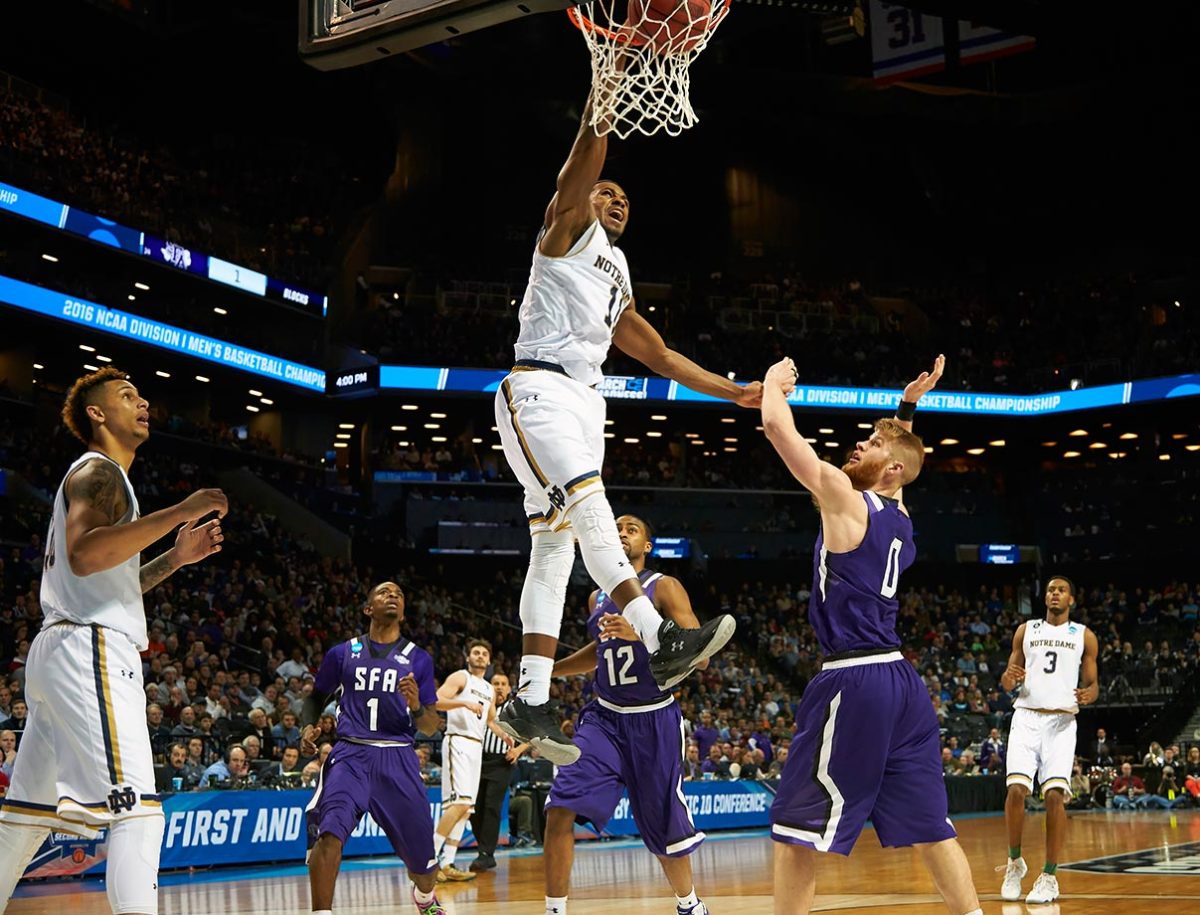
Jackson's long-term future probably makes the most sense as a high–energy third guard, but given how barren the backcourt in Philadelphia has been, he could make sense as a starter in the immediate future. Most importantly, he's got good length (6'5 wingspan) to help himself defensively, and he can hit spot-up jumpers, a prerequisite for any guard playing next to Ben Simmons.
25. Los Angeles Clippers: Cheick Diallo, F, Kansas (6'9", 218)
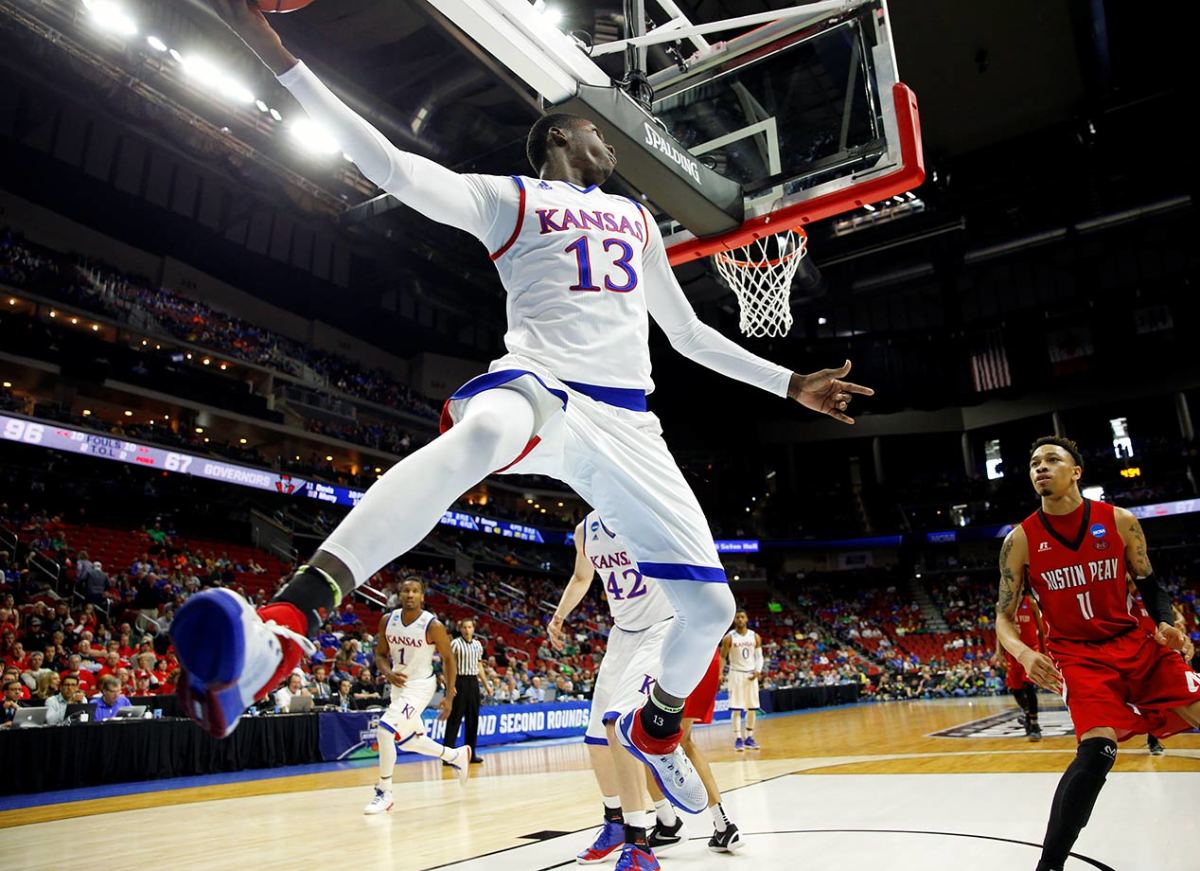
Diallo was basically invisible at Kansas this past season—3.0 ppg, 7.5 mpg—but a great combine and crazy physical tools—7'4.5" wingspan—has helped boost his stock into the first round. He has Biyombo potential off the bench, and the Clippers could draft him here and pay him roughly $70 million less over the next few years. Not a bad deal.
26. Philadelphia 76ers: Patrick McCaw, G, UNLV (6'7", 181)
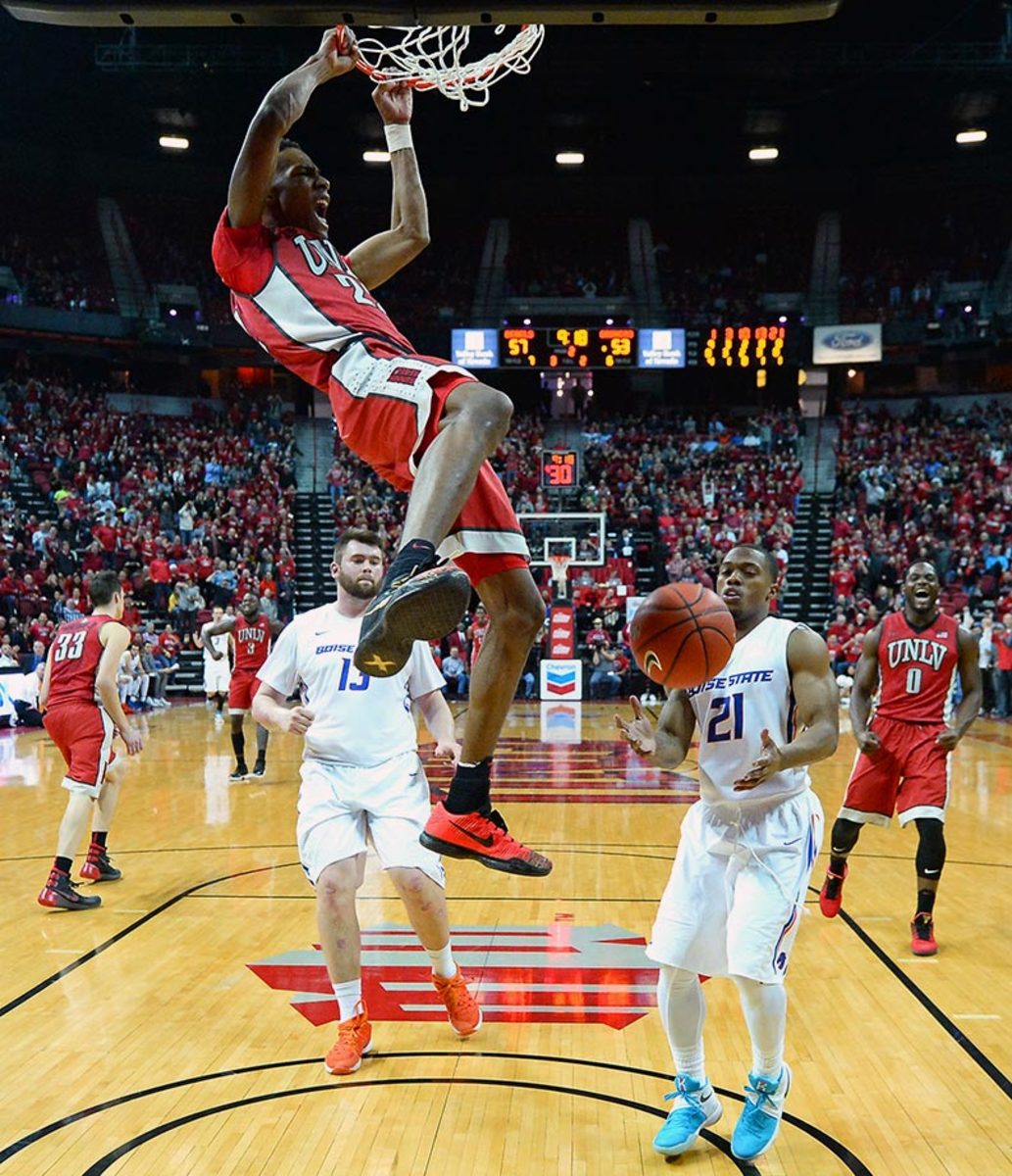
Patrick McCaw has all the tools to become an awesome two-way wing in a few years. He's long, he's big, and he shot 36% from three last year. He got lost on a crappy UNLV team that fired its coach, but if his shooting improves, and he could turn into a real steal this low in the draft. Either way, he'd be a much better project than most of the wings the Sixers have had the past few years.
27. Toronto Raptors: DeAndre Bembry, G, St. Joseph's (6'6", 220)
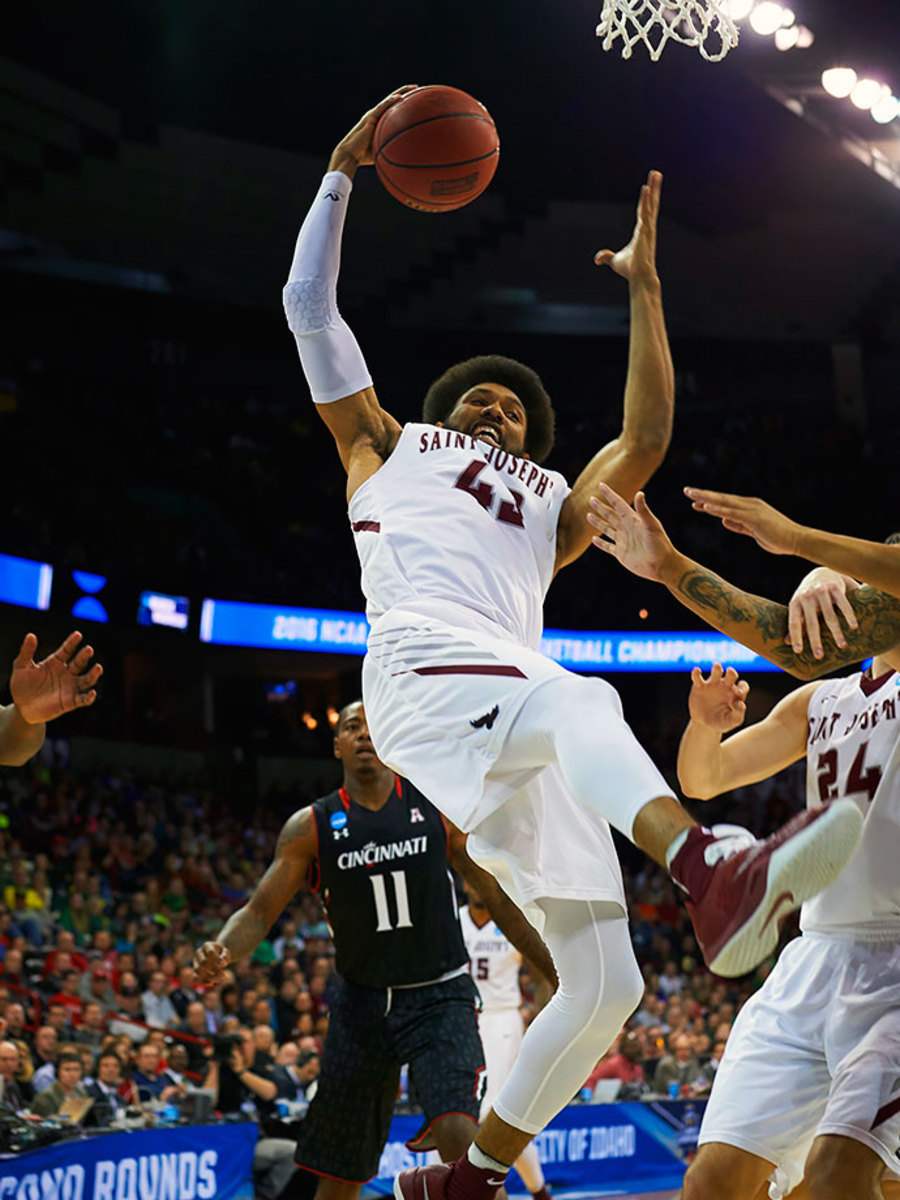
Bembry's three-point shooting is a question mark—31% for his career, 26% last season—and that's probably what will scare off Philly. But that might be the only major weakness. He's long and athletic and should be a great defender. He's got a high IQ, and had one of the most well-rounded games in college basketball (17.5 ppg, 7.8 rpg, 4.5 apg). He's the type of player who should be twice as valuable on a good team like the Raptors. Think Shaun Livingston on the wing, and not just because of the afro.
28. Phoenix Suns: Ivica Zubac, C, Croatia (7'1", 265)
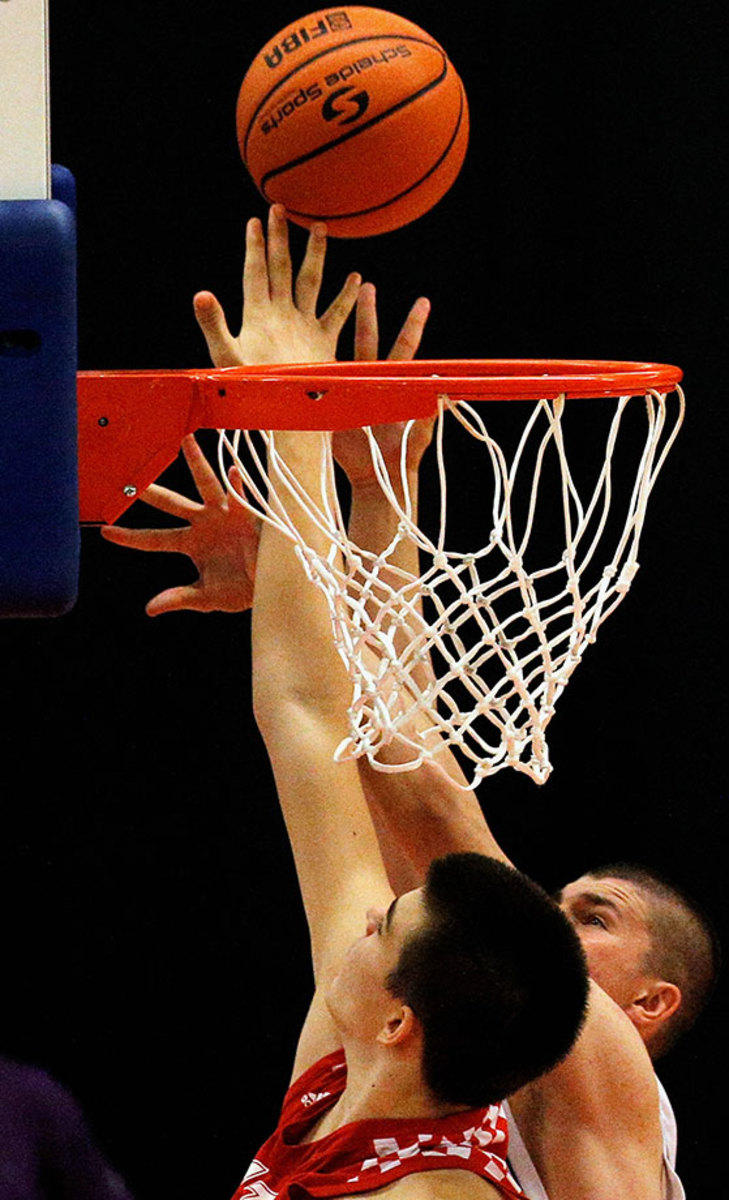
Zubac could go much higher, and at 19 years old, there's plenty of room to grow after another year or two overseas. The recent track record of the Adriatic League big men (Nikola Jokic, Jusuf Nurkic) is certainly encouraging. In any case, the Suns are unlikely to bring all three picks to the NBA next, so this would be a nice longterm investment if he's available.
29. San Antonio Spurs: Tyler Ulis, G, Kentucky (5'9", 149)
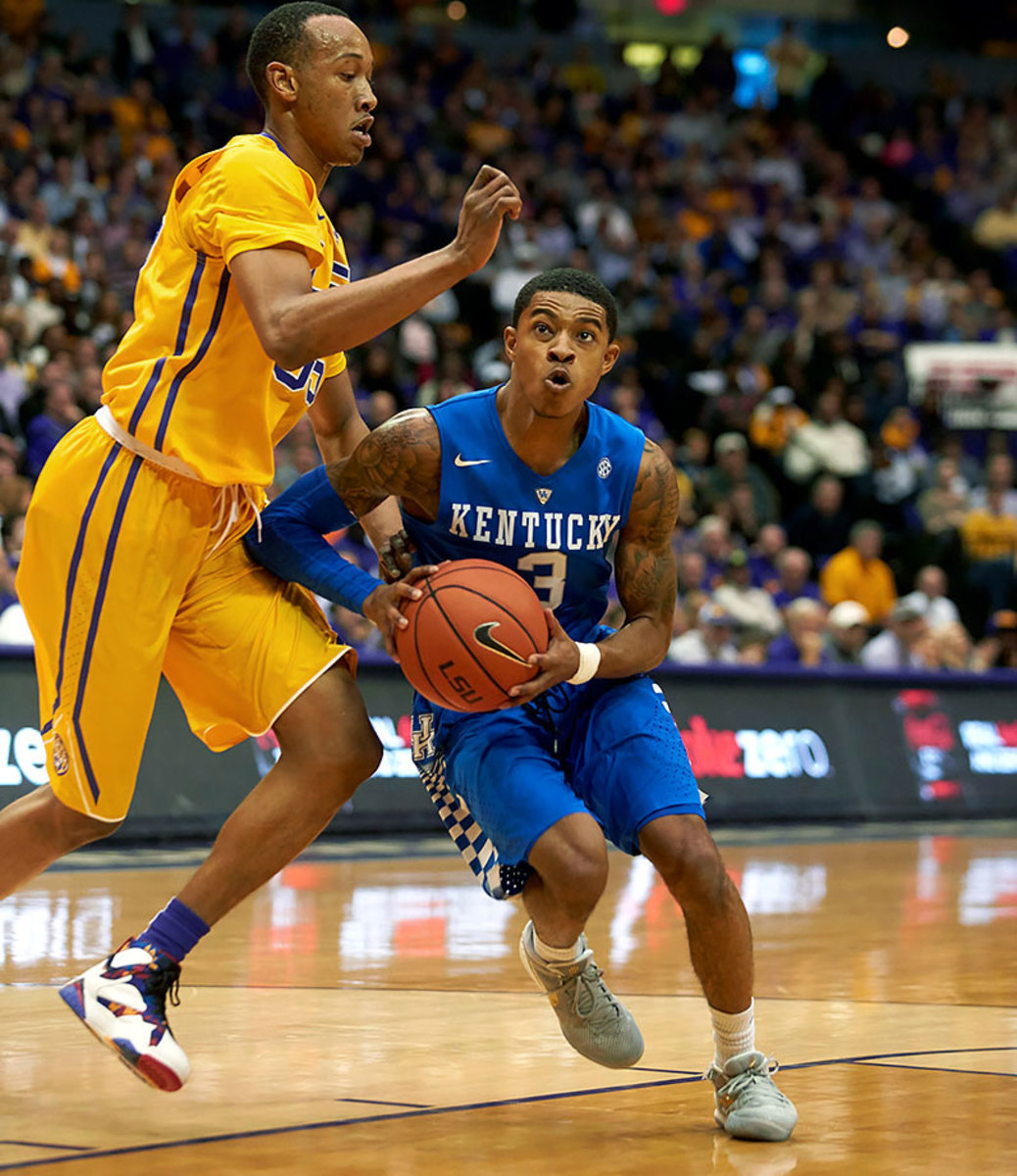
Ulis is dealing with some of the same injury concerns facing Denzel Valentine, and for a point guard who's already 150 pounds and 5'9", giving teams more room for skepticism is not ideal. But look: People around Kentucky basketball have been effusive in their Tyler Ulis praise for two years, and I will bet anything he'll be productive wherever he goes. If injury questions lead him to San Antonio and a bench mob with Kyle Anderson and Boban, this slide will be 100% worth it.
30. Golden State Warriors: Caris LeVert, G, Michigan (6'7", 205)
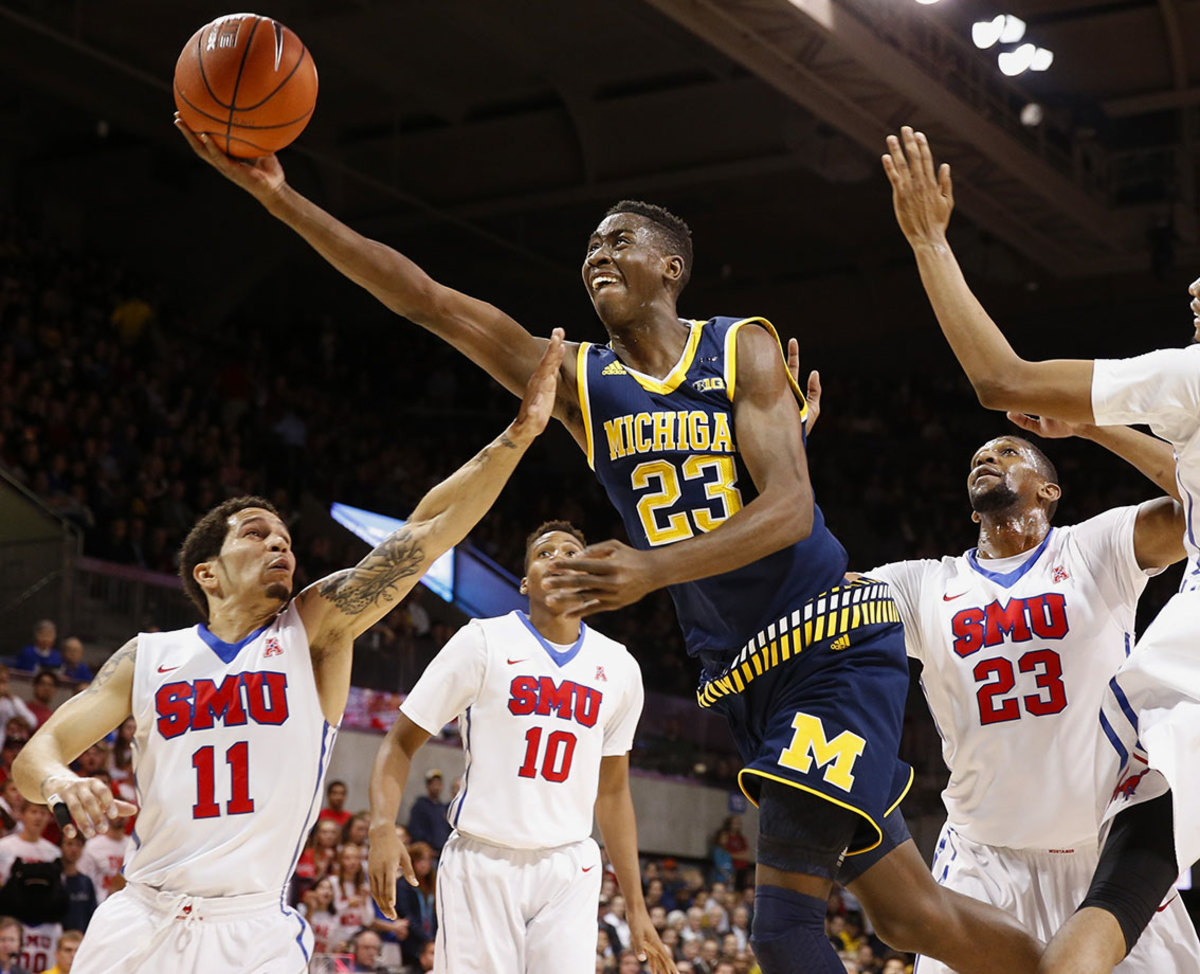
In real life, given the uncertainty surrounding both Andrew Bogut and Festus Ezeli, Damian Jones or A.J. Hammons make more sense for the Warriors. In this mock reality, all that has ever mattered—in March, April, May, and June—is setting Caris Levert free in Golden State. Don't talk to me about a Jones fracture. We're here now. The draft is in 12 hours. Can't quit before the miracle happens.
Even though Cleveland had a modest showing from three-point territory in Game 1, the hot shooting in the playoffs overall is a terrible omen for Toronto. During the regular season, only the lowly Phoenix Suns surrendered a worse opponent three-point percentage (37.7%) than the Raptors (37.3%).
Now, part of that equation is obviously poor luck; but perimeter defense plays a part, too. The Cavs didn’t need a barrage of threes to bury the Raptors by more than 30 points to start this series. So, what happens if they once they fire on all cylinders from deep? It’s safe to say Toronto doesn’t want to find out the answer to that question.
Ultimately, however, it hardly matters if the Cavaliers score by raining down from deep or charging back to the free-throw line. If Kyle Lowry and DeMar DeRozan don’t find a way to rid themselves of their respective postseason slumps, the Raptors will suffer the same demise met by the Pistons and Hawks: a four-game sweep.
